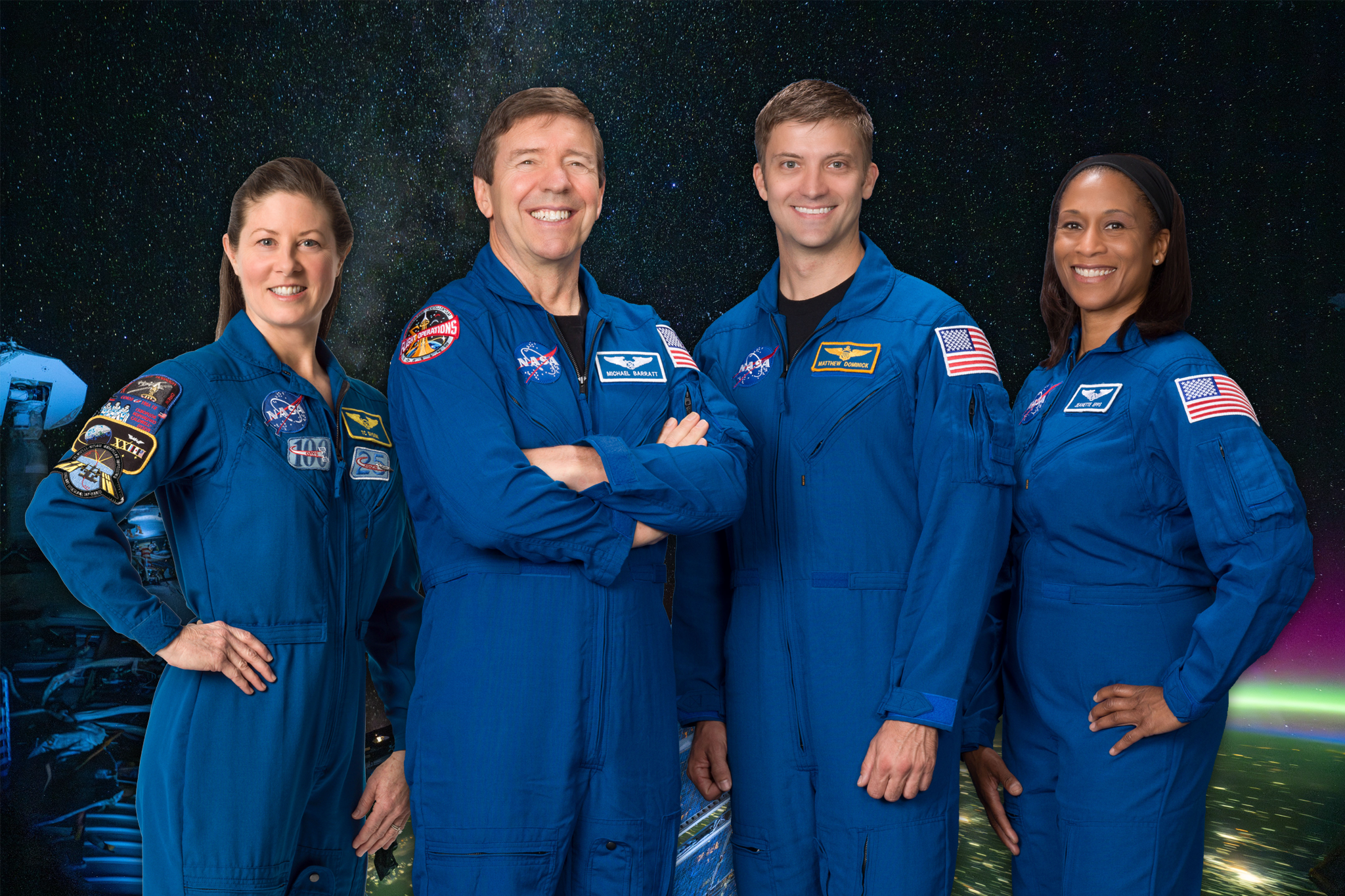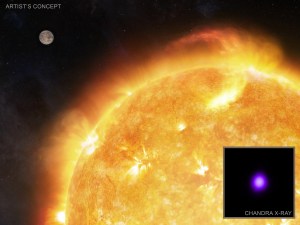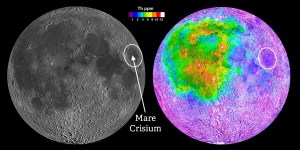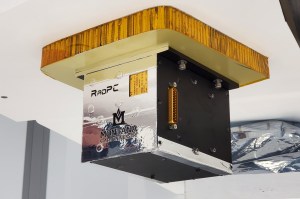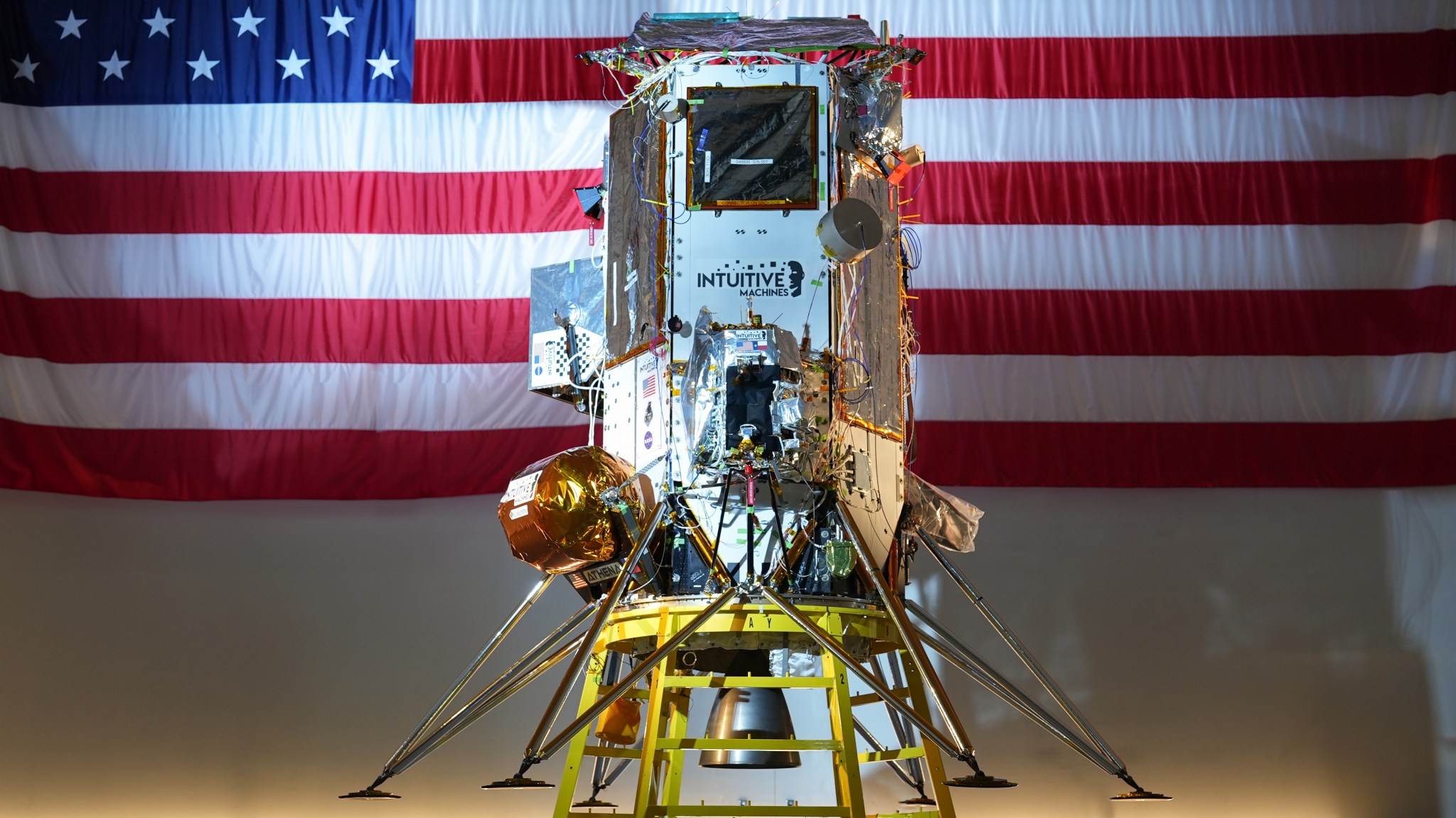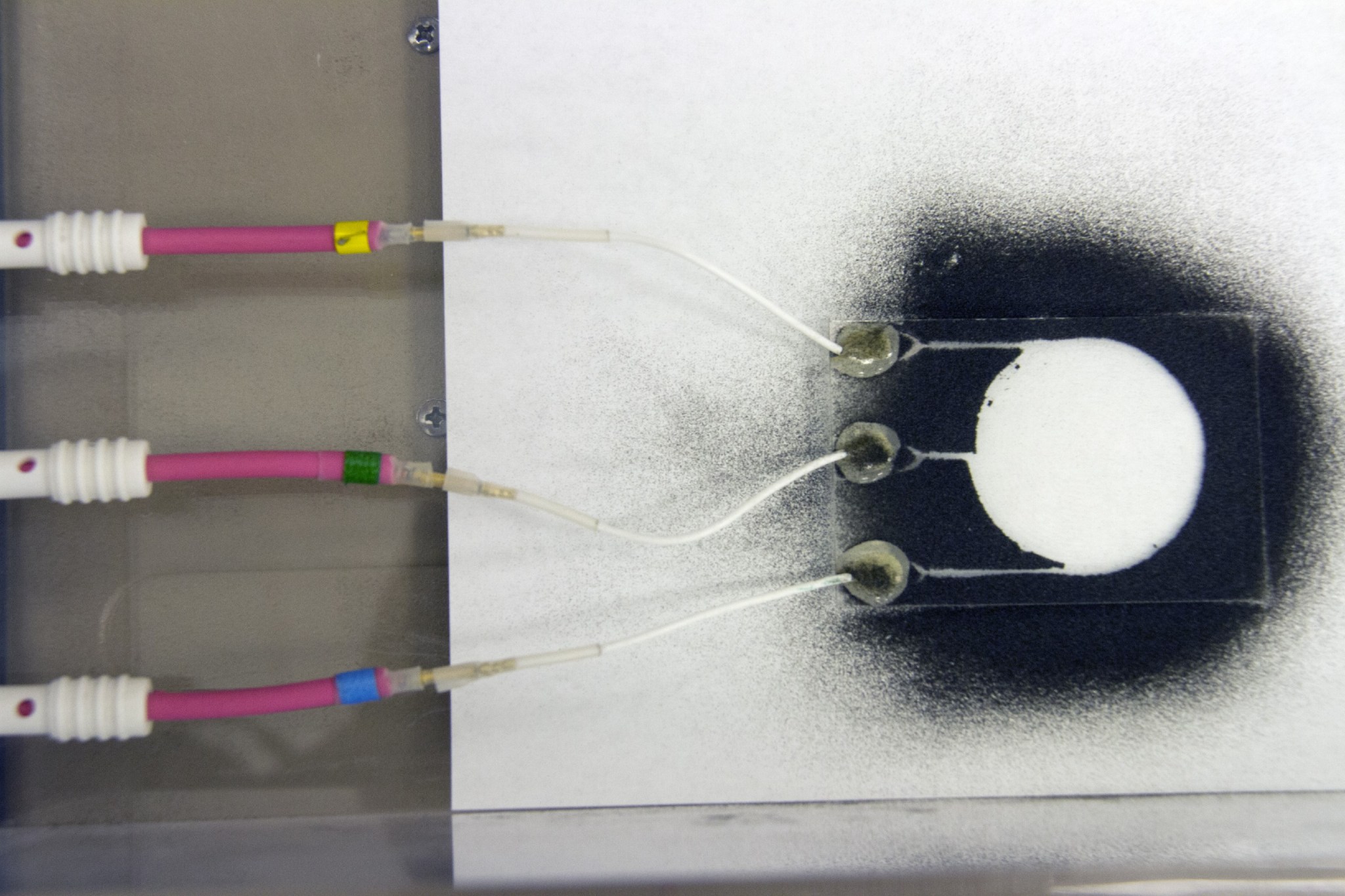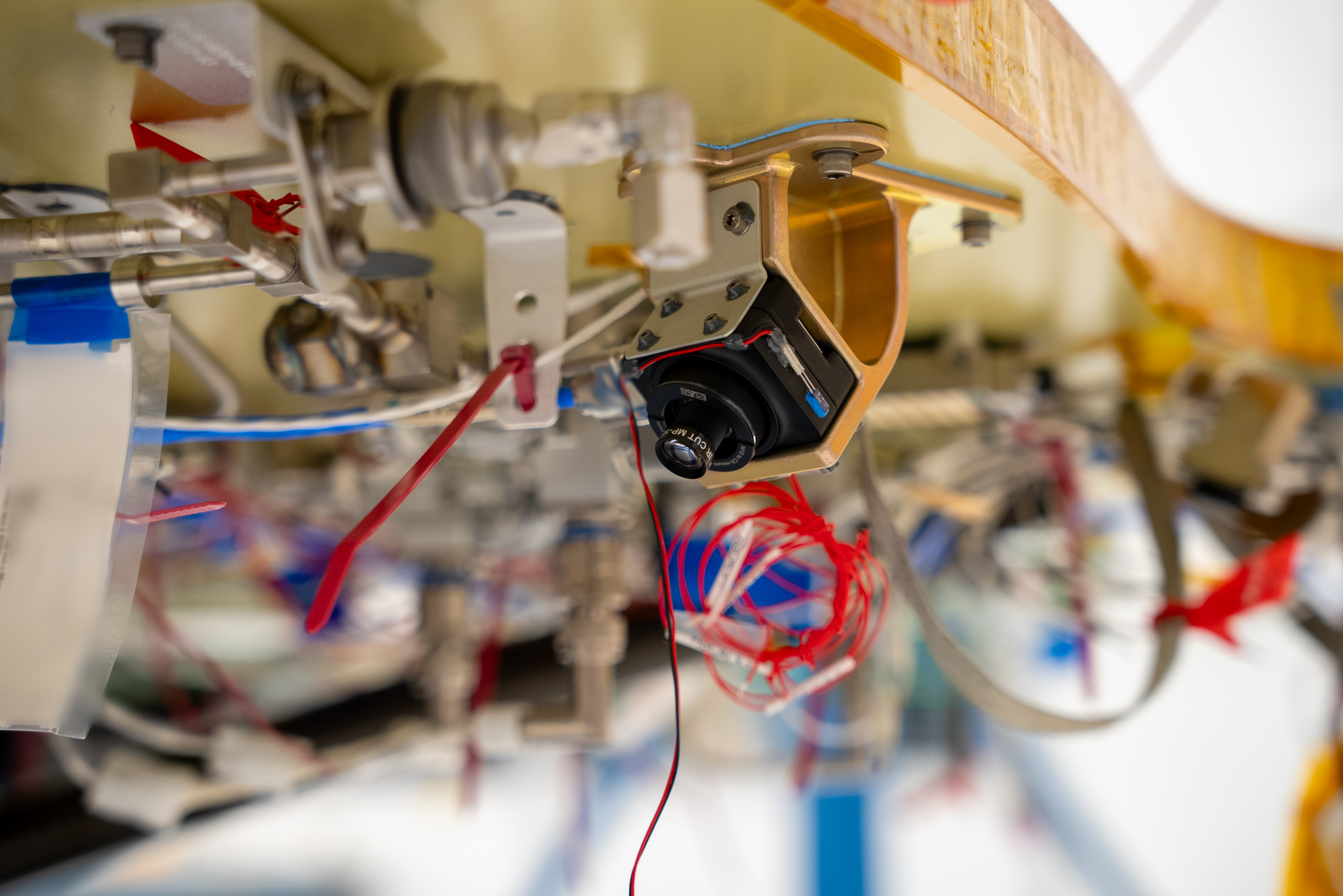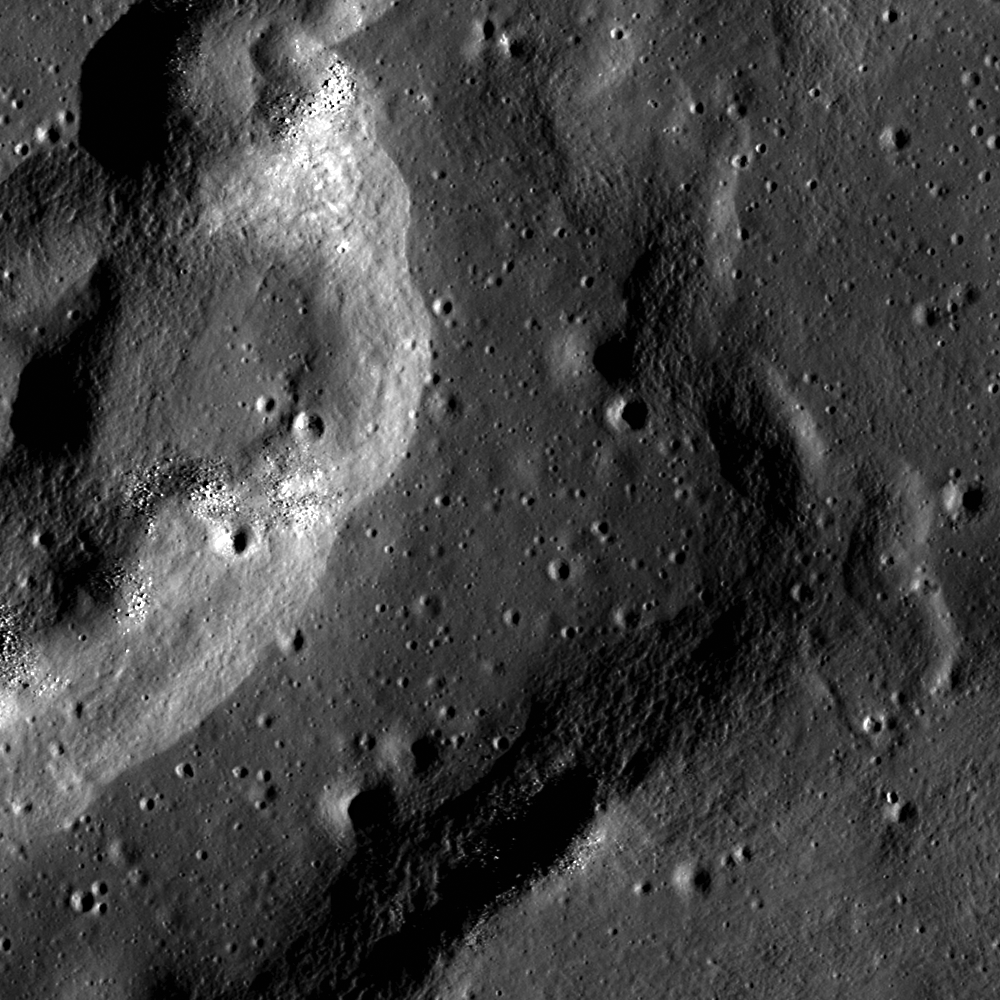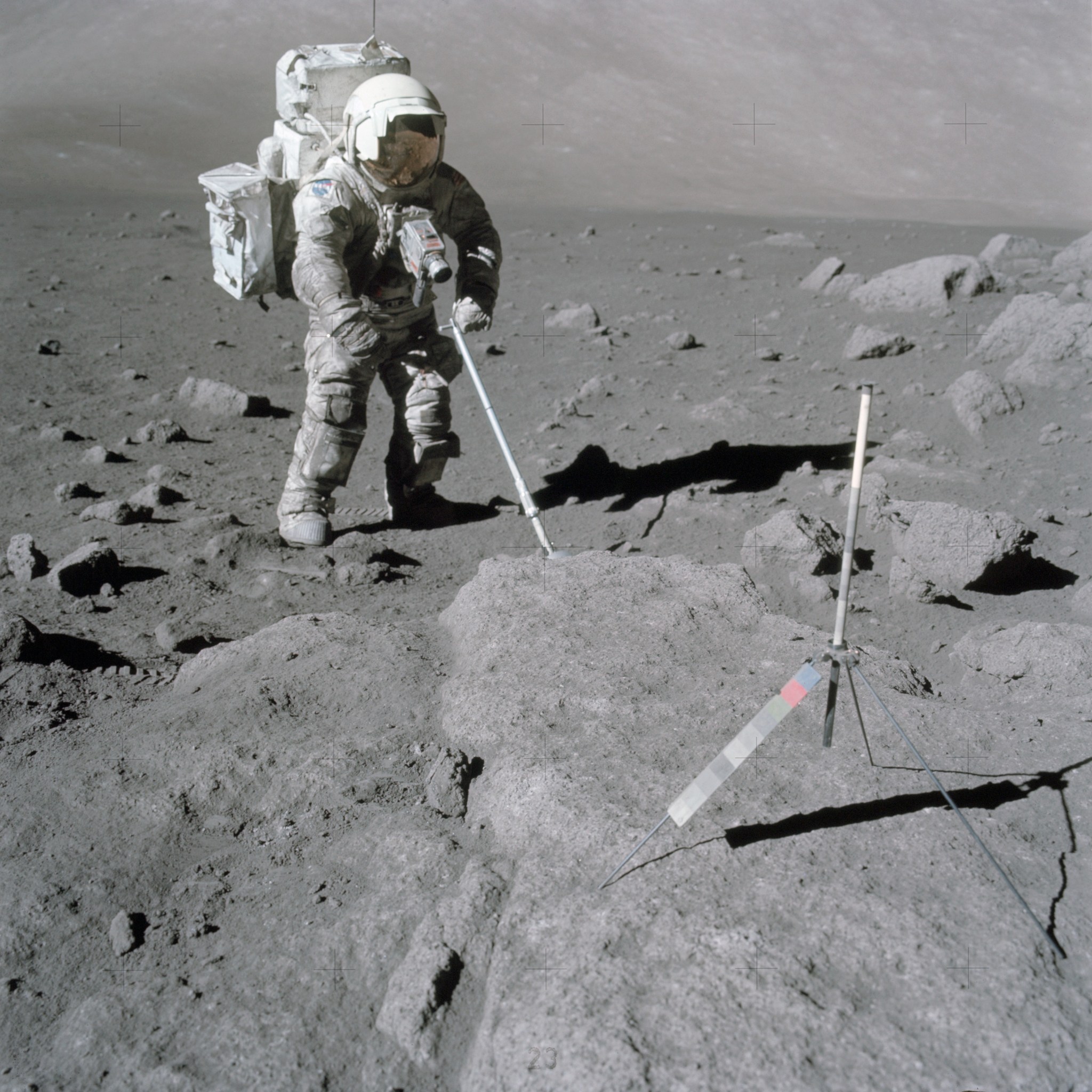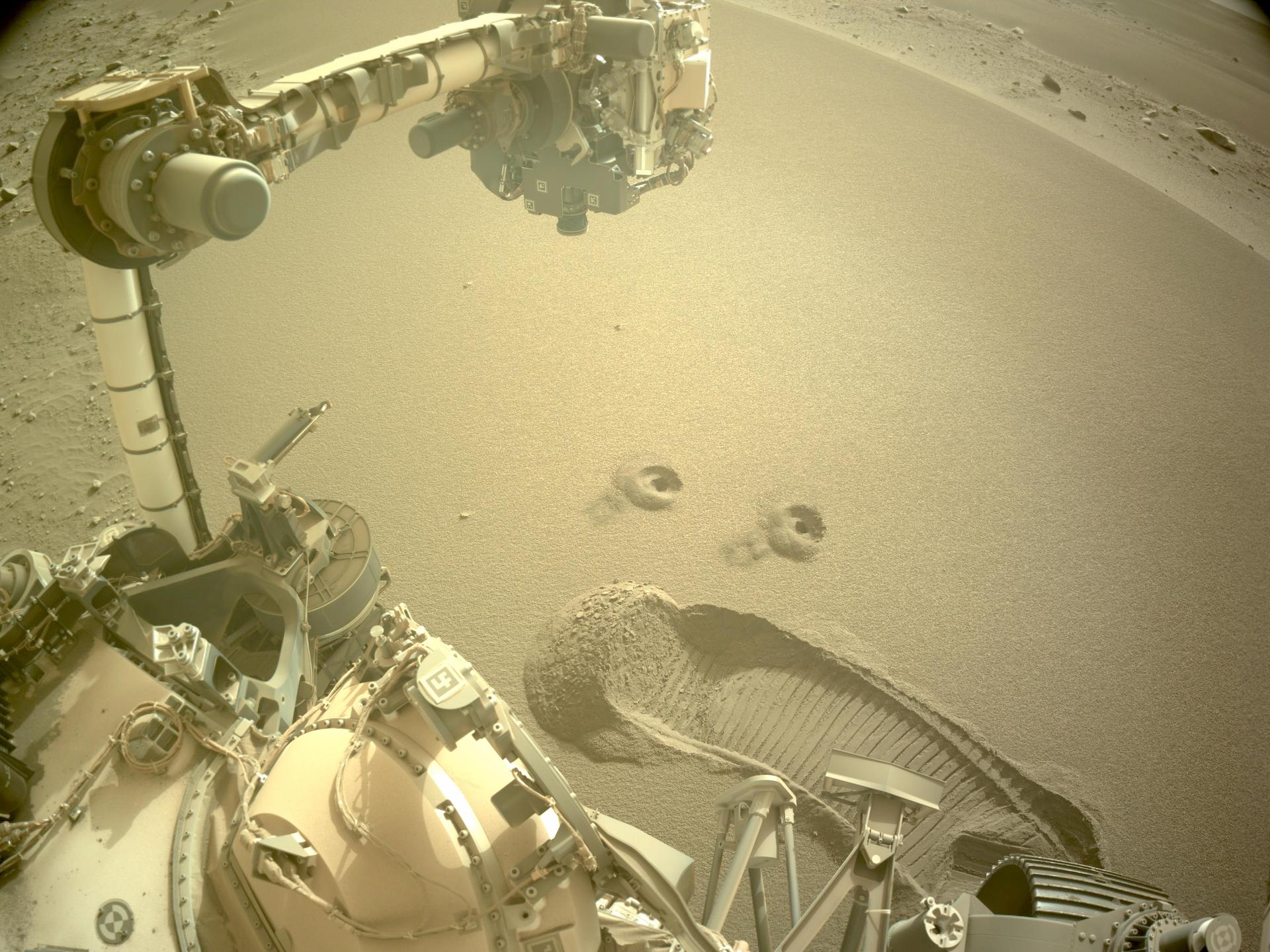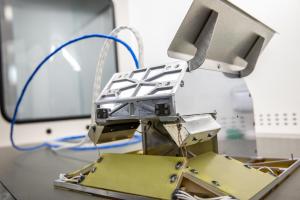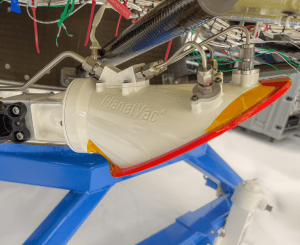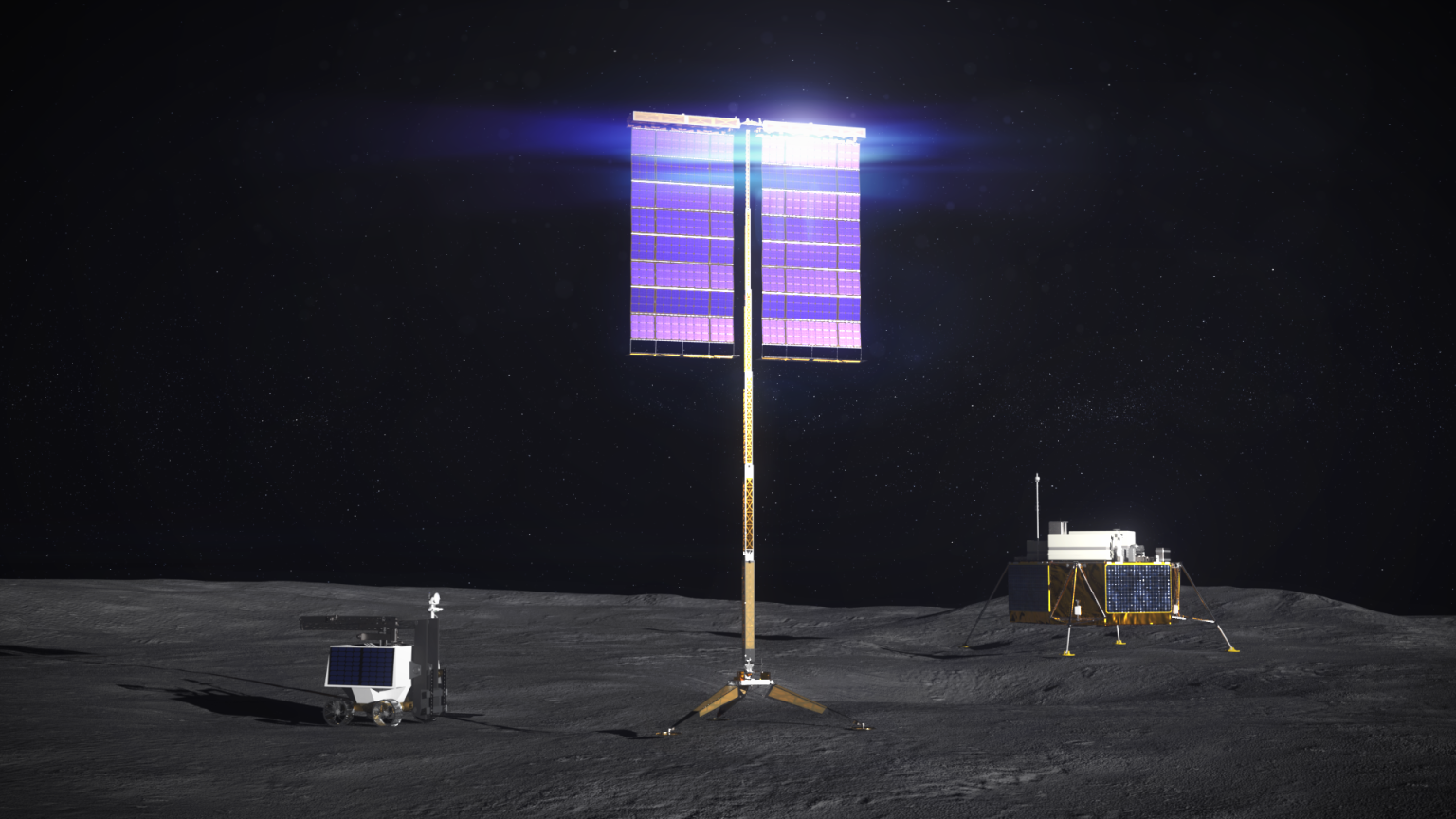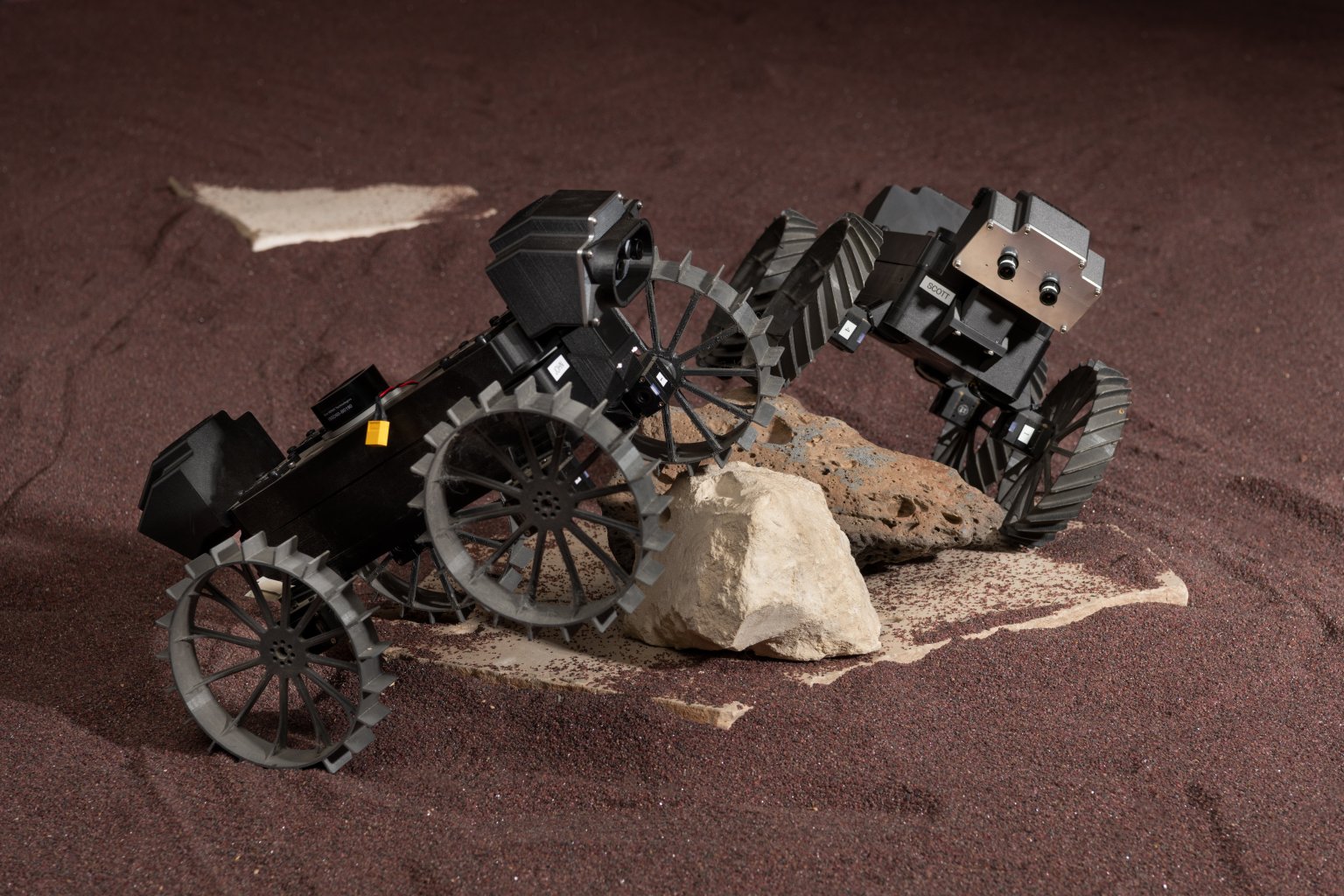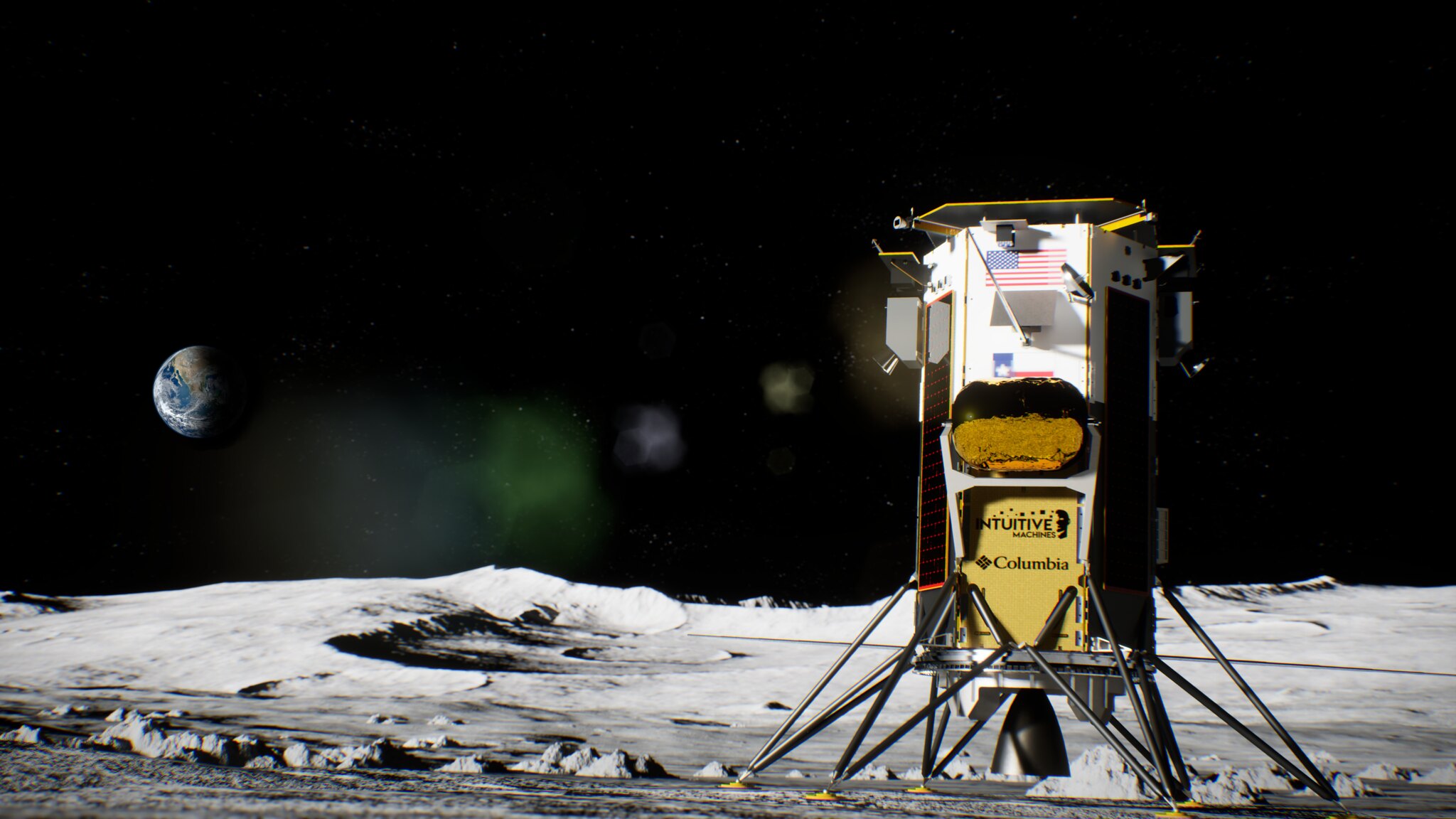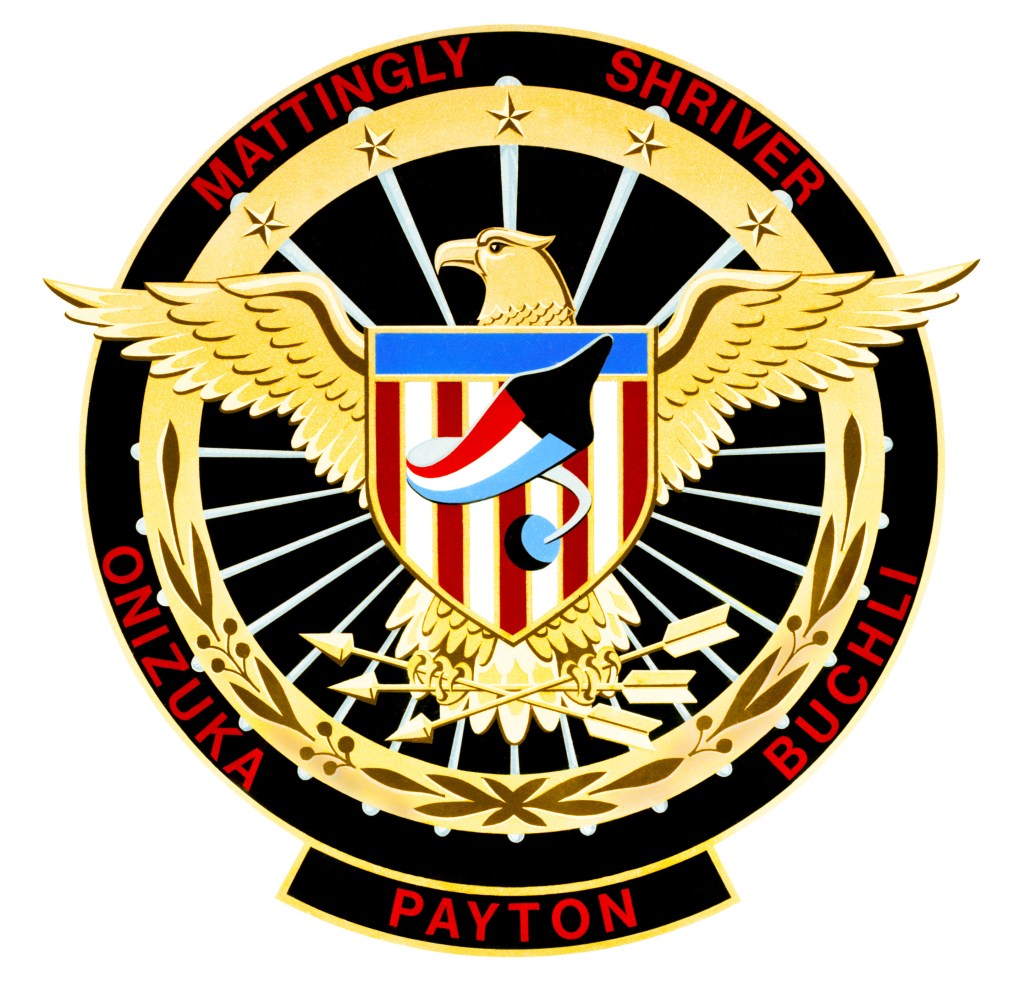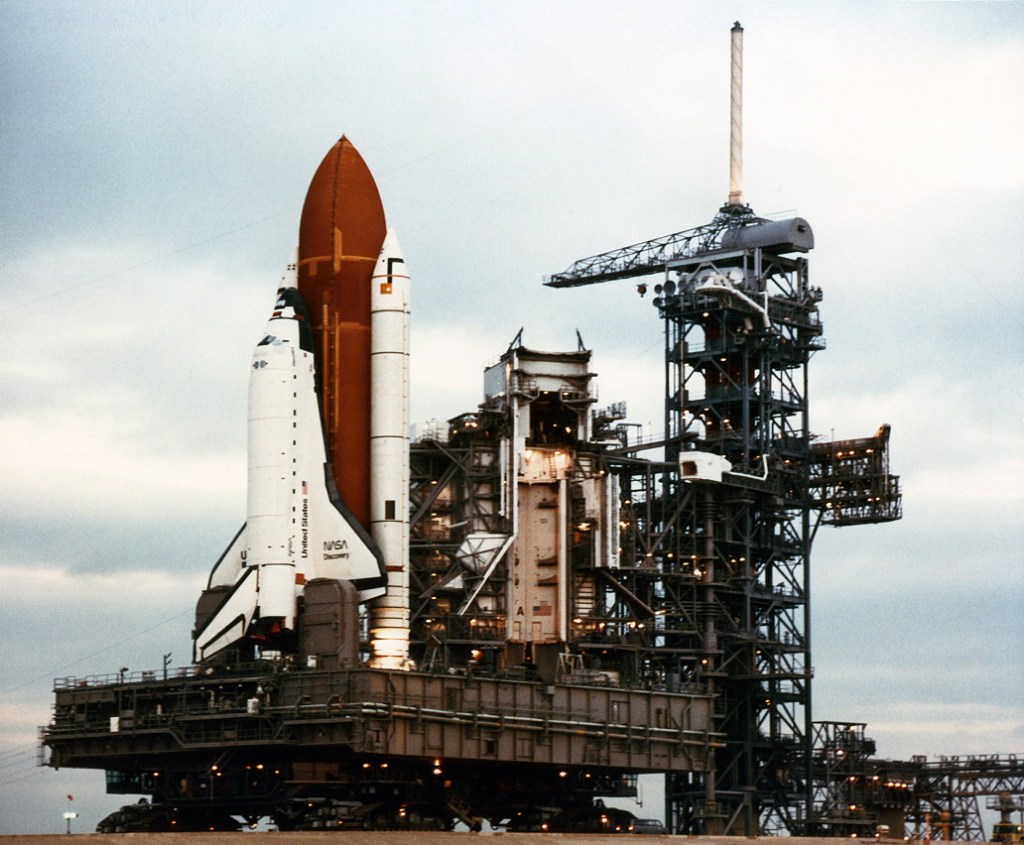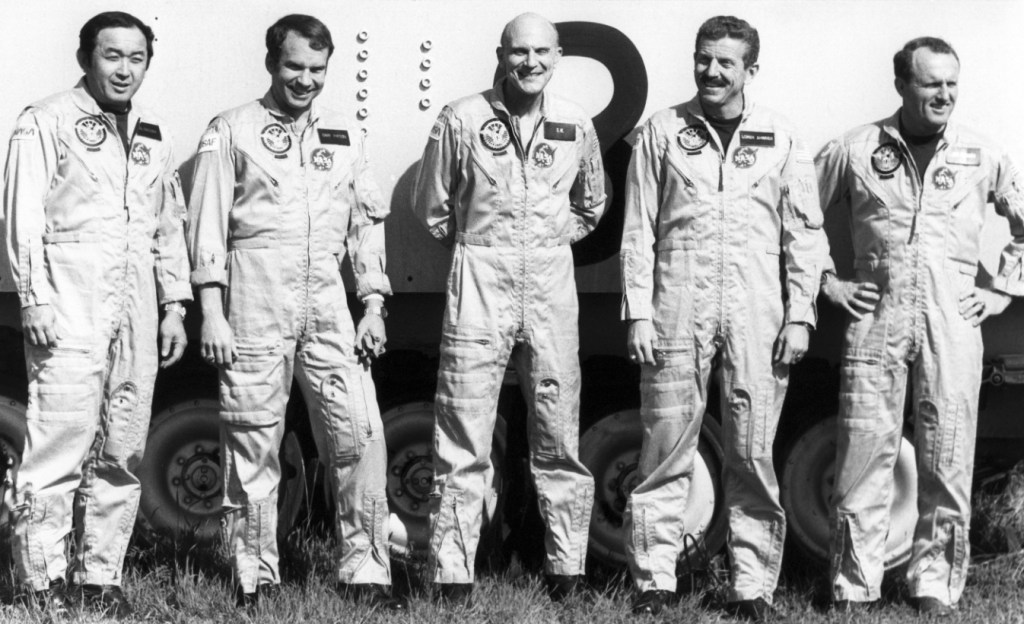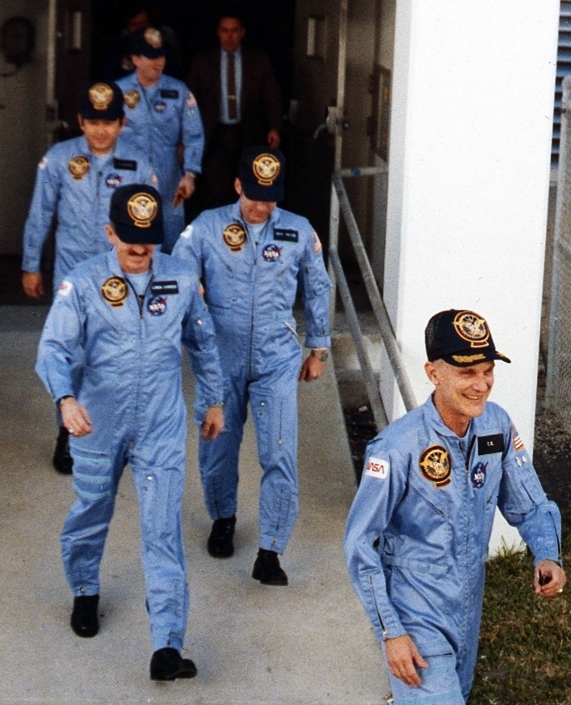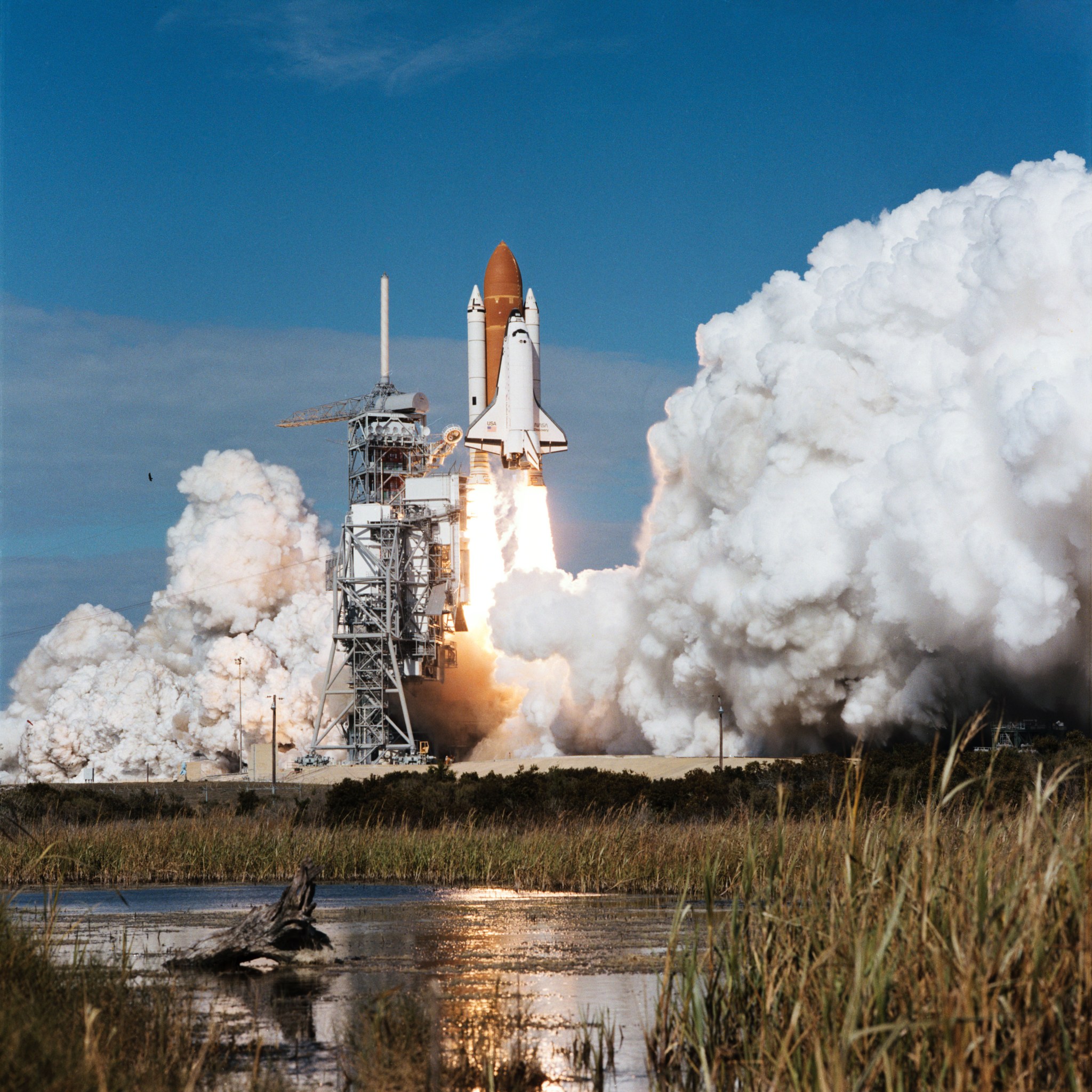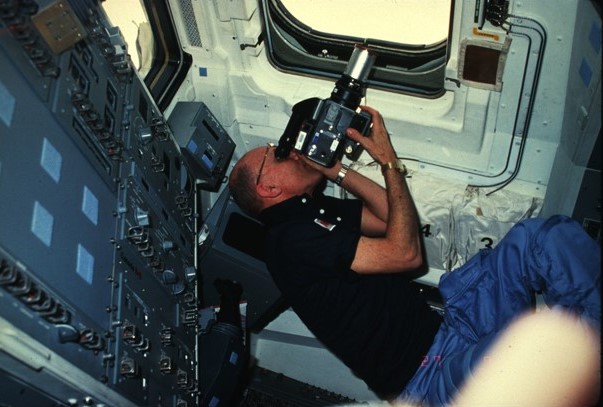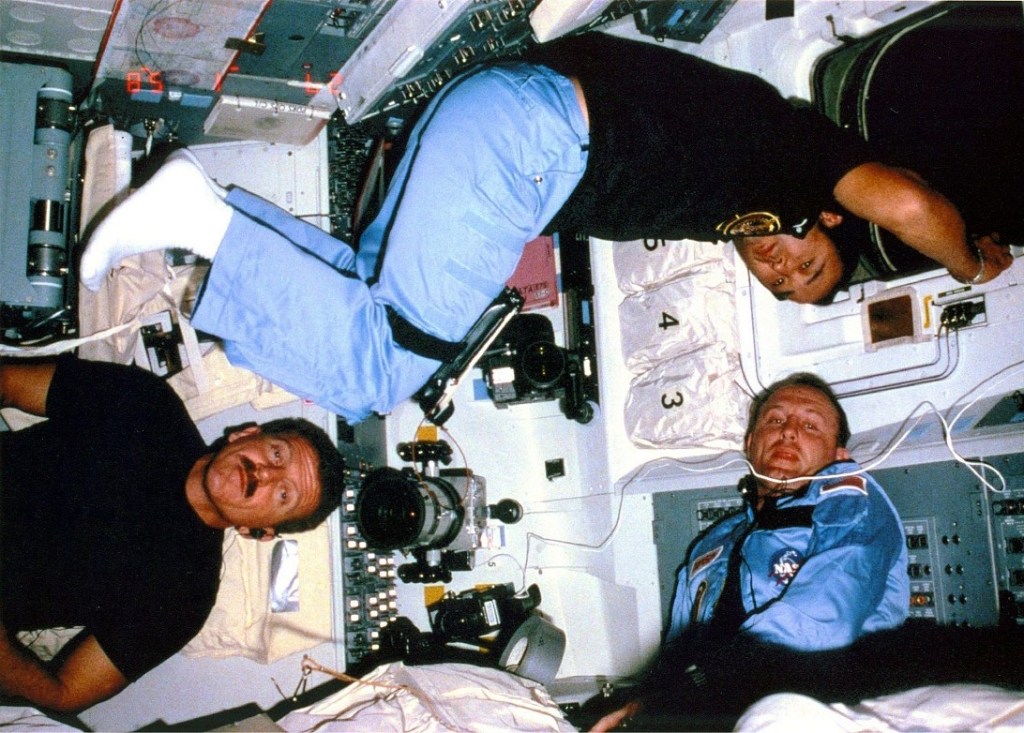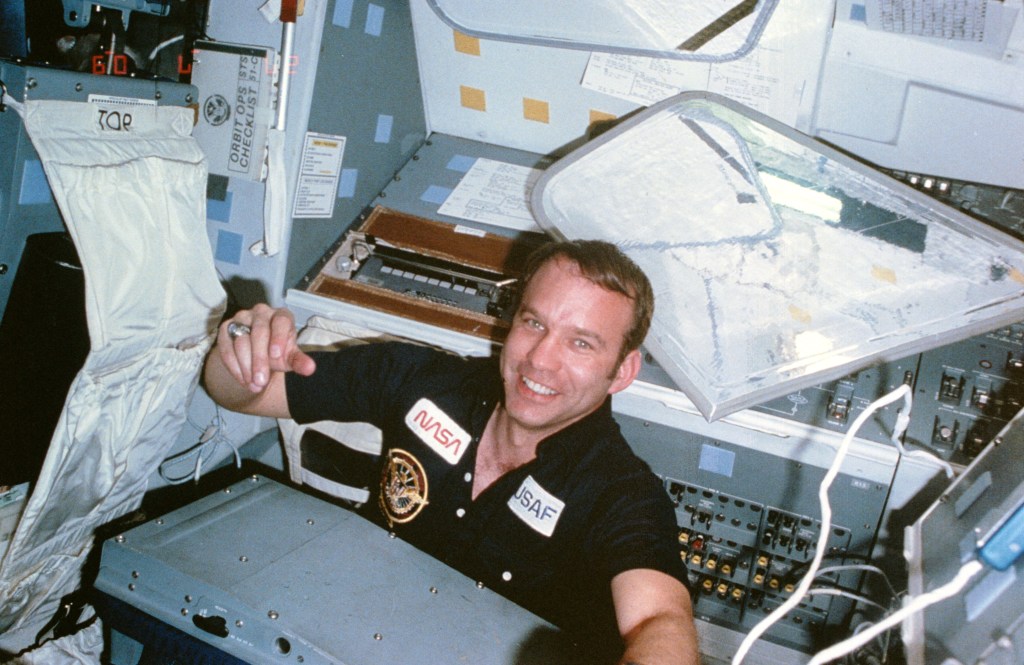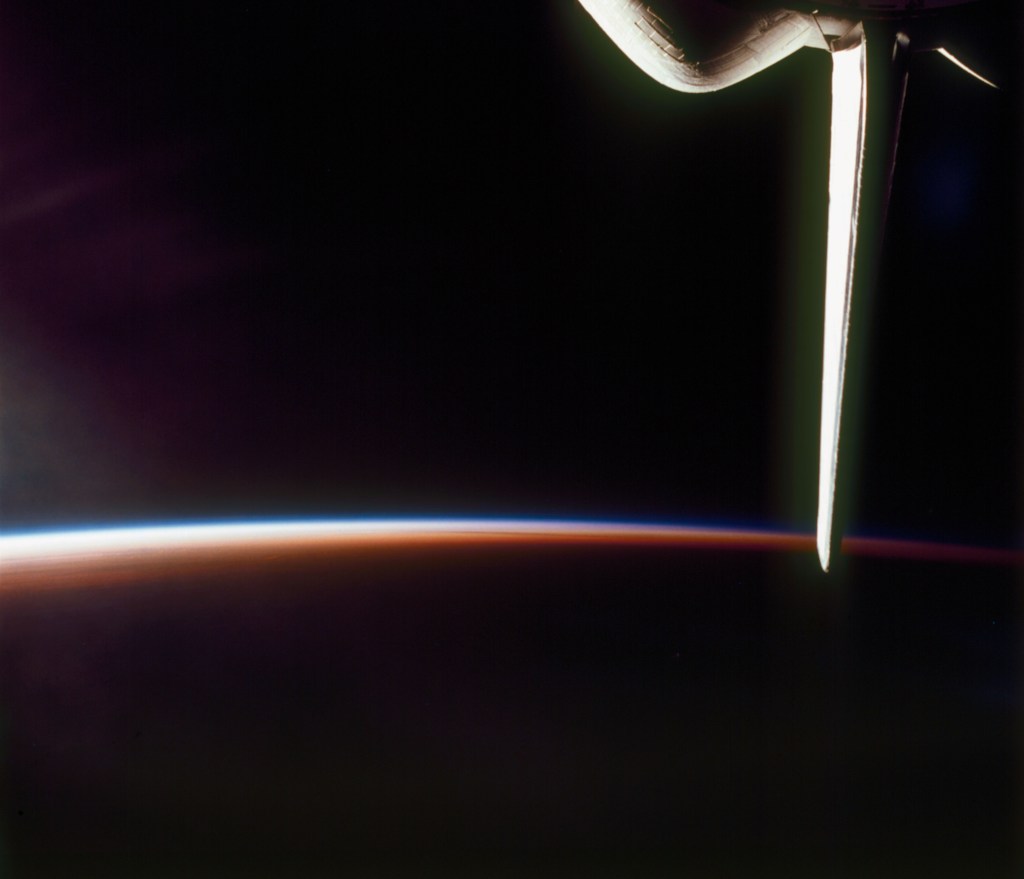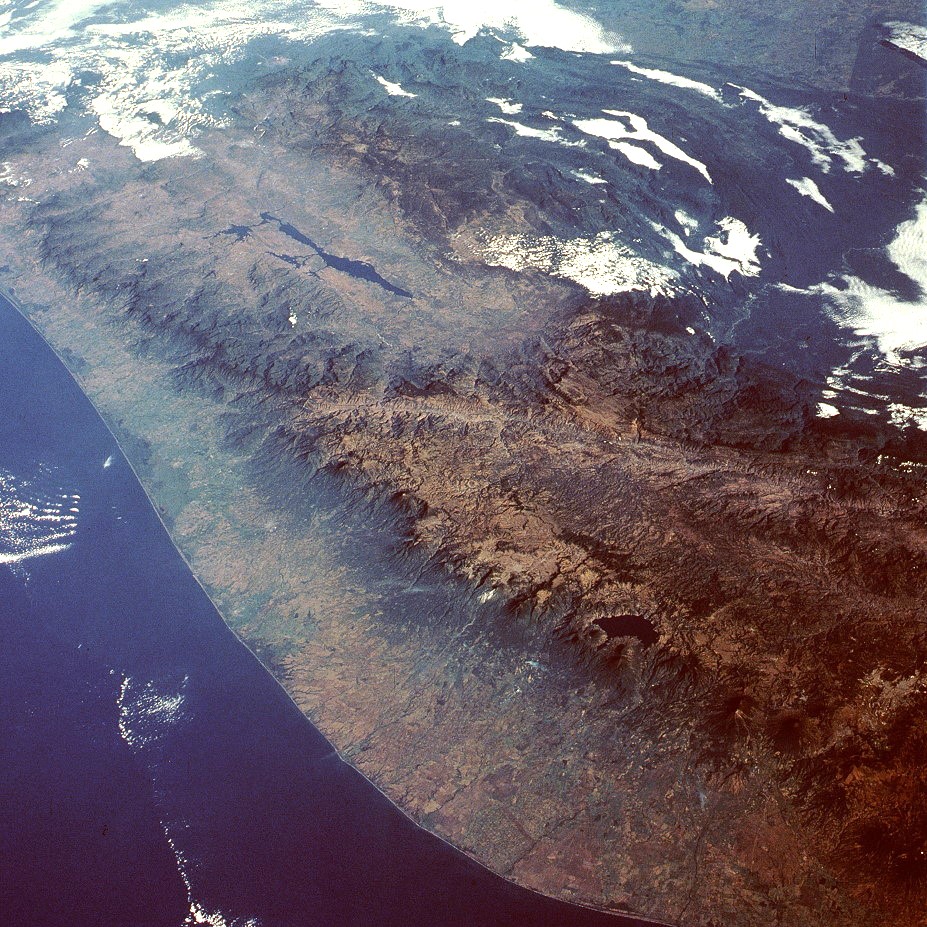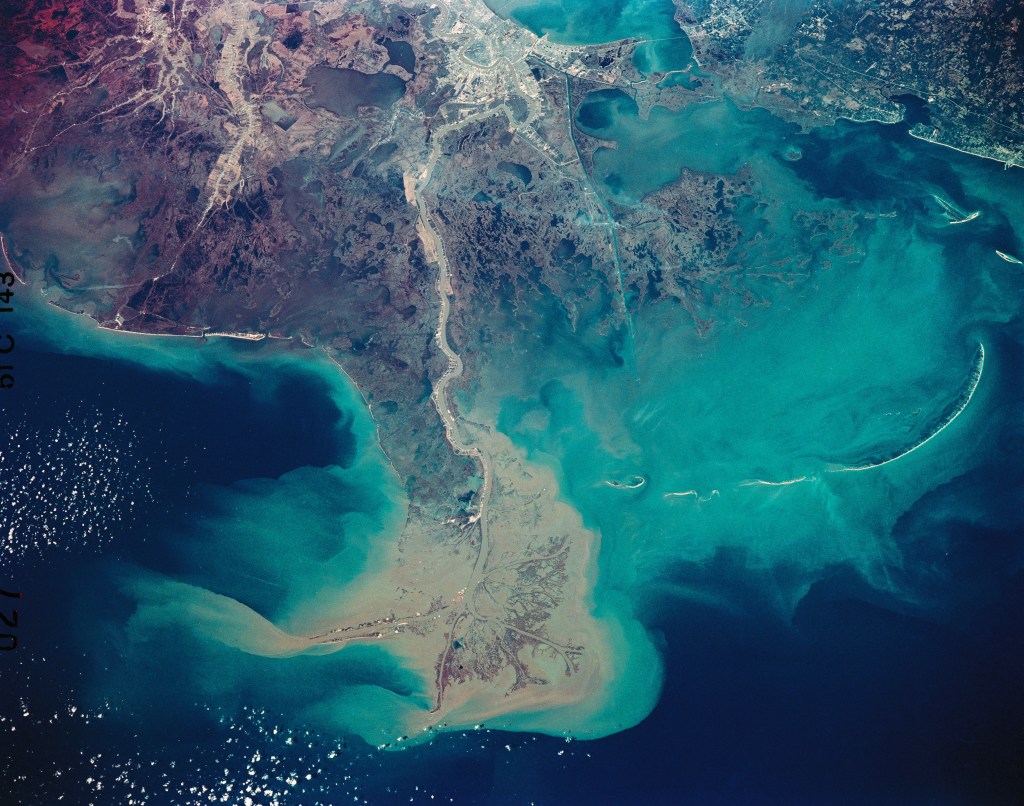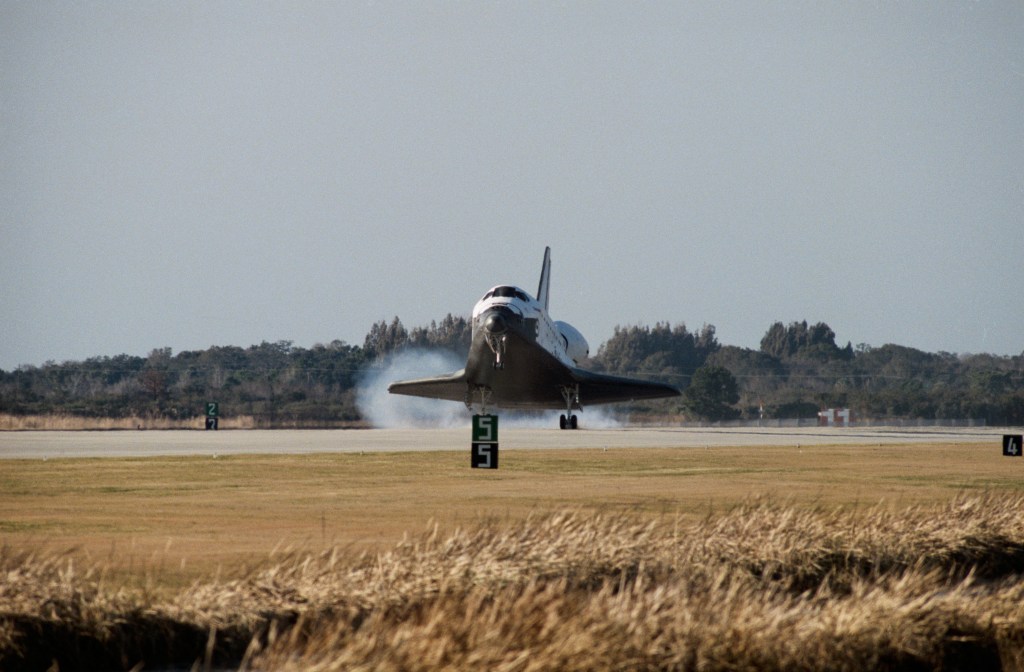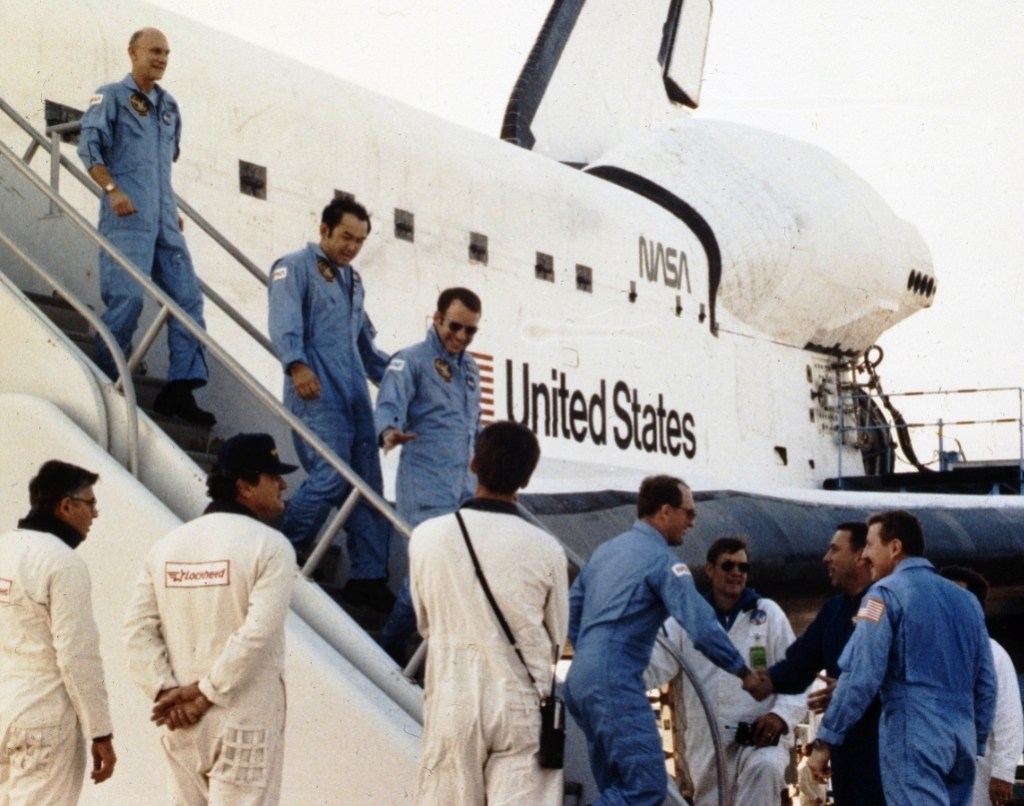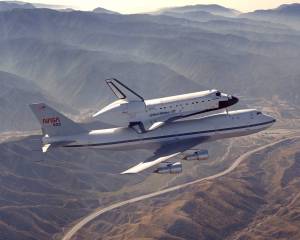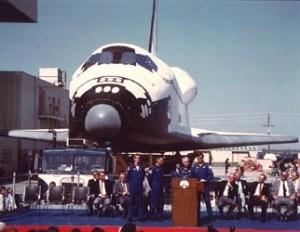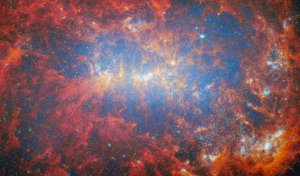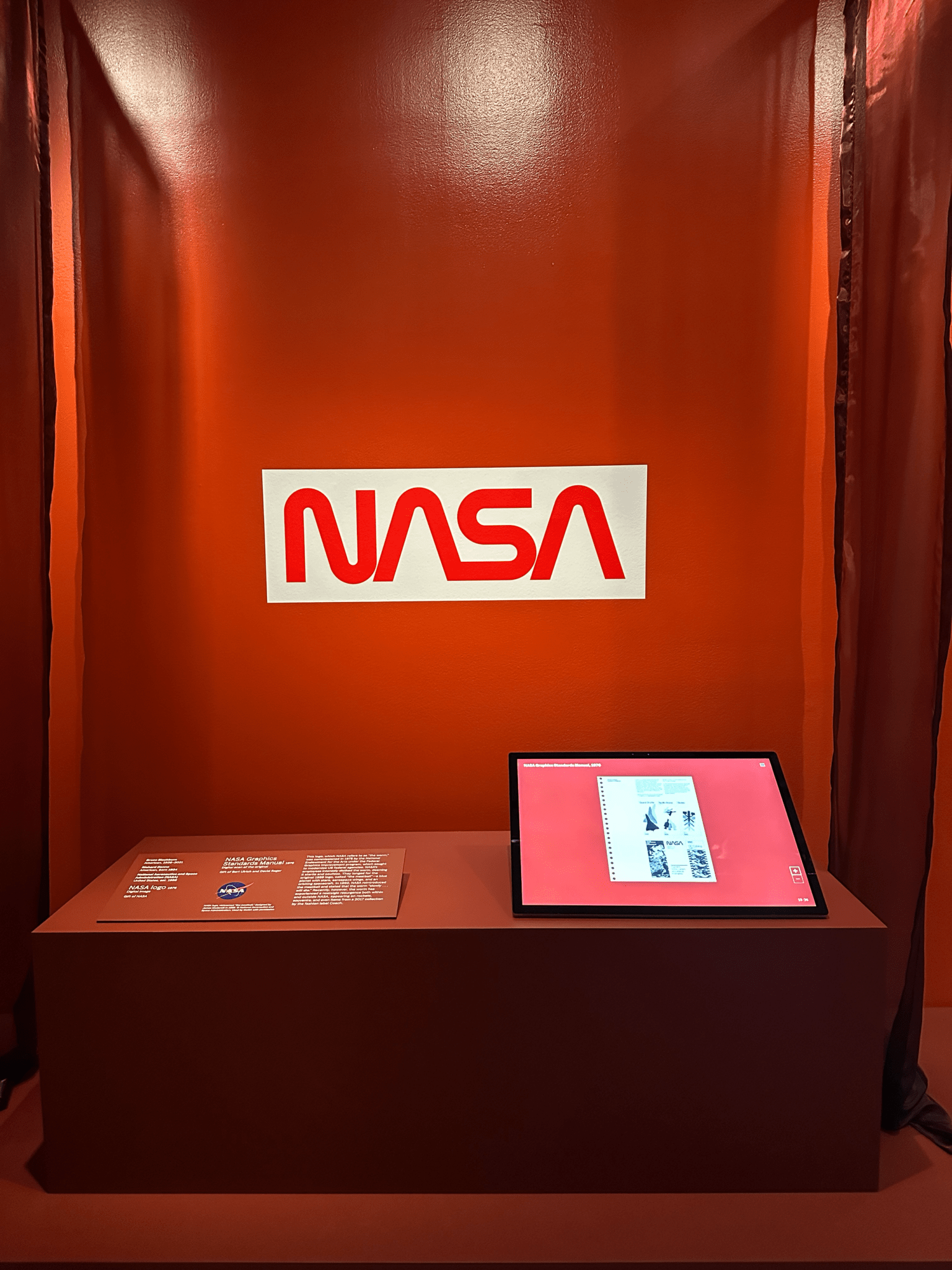3 min read
Preparations for Next Moonwalk Simulations Underway (and Underwater)
NASA will host four astronauts at 9 a.m. CDT Wednesday, Jan. 29, for a media opportunity at the agency’s Marshall Space Flight Center in Huntsville, Alabama.
NASA astronauts Matt Dominick, Mike Barratt, Jeanette Epps, and Tracy C. Dyson served as part of Expedition 71 and will discuss their recent missions to the International Space Station.
Dominick, Barratt, and Epps launched aboard NASA’s SpaceX Crew-8 mission in March 2024 and returned to Earth in October 2024 after spending nearly eight months aboard the orbiting complex. Dyson launched aboard a Roscosmos Soyuz spacecraft also in March 2024 and returned in September 2024 after completing a six-month research mission aboard the space station.
Media are invited to attend the event and visit with the astronauts as they discuss their science missions aboard the microgravity laboratory and other mission highlights. Media interested in participating must confirm their attendance by 12 p.m., Monday, Jan. 27, to both Lance D. Davis – lance.d.davis@nasa.gov – and Joel Wallace – joel.w.wallace@nasa.gov – in Marshall’s Office of Communications.
Media must arrive by 8 a.m., Wednesday, to the Redstone Arsenal Joint Visitor Control Center Gate 9 parking lot, located at the Interstate 565 interchange on Research Park Boulevard. The event will take place in the NASA Marshall Activities Building 4316. Vehicles are subject to a security search at the gate, so please allow extra time. All members of the media and drivers will need photo identification. Drivers will need proof of insurance if requested.
The Expedition 71 crew conducted hundreds of technology demonstrations and science experiments, including the bioprinting of human tissues. These higher-quality tissues printed in microgravity could help advance the production of organs and tissues for transplant and improve 3D printing of foods and medicines on future long-duration space missions. The crew also looked at neurological organoids, created with stem cells from patients to study neuroinflammation, a common feature of neurodegenerative conditions such as Parkinson’s disease. The organoids provided a platform to study these diseases and their treatments and could help address how extended spaceflight affects the brain.
As part of Crew-8, Dominick served as commander, Barratt served as pilot, and Epps served as a mission specialist. Dyson launched aboard a Soyuz space as part of an international crew and served as a flight engineer on a six-month research mission. The expedition to the space station was the first spaceflight for Dominick, third for Barratt, first for Epps, and third for Dyson.
The International Space Station is a convergence of science, technology, and human innovation that enables research not possible on Earth. For more than 24 years, NASA has supported a continuous human presence aboard the orbiting laboratory, through which astronauts have learned to live and work in space for extended periods of time. The space station is a springboard for developing a low Earth economy and NASA’s next great leaps in exploration, including missions to the Moon under Artemis and, ultimately, human
Learn more about the International Space Station, its research, and its crew, at:
Lance D. Davis
Marshall Space Flight Center, Huntsville, Ala.
256-640-9065
lance.d.davis@nasa.gov
Joel Wallace
Marshall Space Flight Center, Huntsville, Ala.
256-786-0117
joel.w.wallace@nasa.gov
Share
Details
Related Terms
For the second time, Intuitive Machines will launch a lunar lander to deliver NASA technology demonstrations and science investigations to the Moon for the benefit of all. Media accreditation is open for the IM-2 launch, part of NASA’s CLPS (Commercial Lunar Payload Services) initiative and Artemis campaign to establish a long-term presence on the Moon.
The Intuitive Machines Nova-C class lunar lander will launch on a SpaceX Falcon 9 rocket and carry NASA science, technology demonstrations, and other commercial payloads to Mons Mouton, a lunar plateau near the Moon’s South Pole region. Liftoff is targeted for a multi-day launch window, which opens no earlier than late February, from Launch Complex 39A at NASA’s Kennedy Space Center in Florida.
Media prelaunch and launch activities will take place at NASA Kennedy and are open to U.S. citizens and international media. U.S. media must apply by Wednesday, Feb. 12, and international media must apply by Wednesday, Feb. 5.
Media wishing to take part in person must apply for credentials at:
Credentialed media will receive a confirmation email upon approval. NASA’s media accreditation policy is available online. For questions about accreditation or to request special logistical support, such as space for satellite trucks, tents, or electrical connections, please email by Wednesday, Feb. 12, to: ksc-media-accreditat@mail.nasa.gov. For other questions, please contact NASA Kennedy’s newsroom at: 321-867-2468.
Para obtener información sobre cobertura en español en el Centro Espacial Kennedy o si desea solicitar entrevistas en español, comuníquese con Antonia Jaramillo o Messod Bendayan a: antonia.jaramillobotero@nasa.gov o messod.c.bendayan@nasa.gov.
Among the items on its lander, the IM-2 mission will deliver one of the first on-site, or in-situ, demonstrations of resource utilization on the Moon, using a drill and mass spectrometer to measure the volatiles content of subsurface materials. Other technology instruments on this delivery will demonstrate a robust surface communications system and deploy a propulsive drone mobility solution.
Launching as a rideshare alongside the IM-2 delivery NASA’s Lunar Trailblazer spacecraft also will begin its journey to lunar orbit, where it will map the distribution of the different forms of water on the Moon.
A successful landing will help support the CLPS model for commercial payload deliveries to the lunar surface, as another step toward a sustainable lunar future. As a primary customer of CLPS, NASA is investing in lower-cost methods of Moon deliveries and is one of multiple customers for these flights.
NASA is working with several U.S. companies to deliver science and technology to the lunar surface through the agency’s CLPS initiative. This pool of companies may bid on task orders to deliver NASA payloads to the Moon. Contract awards cover end-to-end commercial payload delivery services, including payload integration, mission operations, launch from Earth, and landing on the surface of the Moon. These contracts are indefinite-delivery/indefinite-quantity contracts with a cumulative maximum value of $2.6 billion through 2028.
For more information about the agency’s Commercial Lunar Payload Services initiative, see:
-end-
Alise Fisher / Jasmine Hopkins
Headquarters, Washington
202-358-1600
alise.m.fisher@nasa.gov / jasmine.s.hopkins@nasa.gov
Natalia Riusech / Nilufar Ramji
Johnson Space Center, Houston
281-483-5111
natalia.s.riusech@nasa.gov / nilufar.ramji@nasa.gov
Antonia Jaramillo
Kennedy Space Center, Florida
321-867-2468
antonia.jaramillobotero@nasa.gov
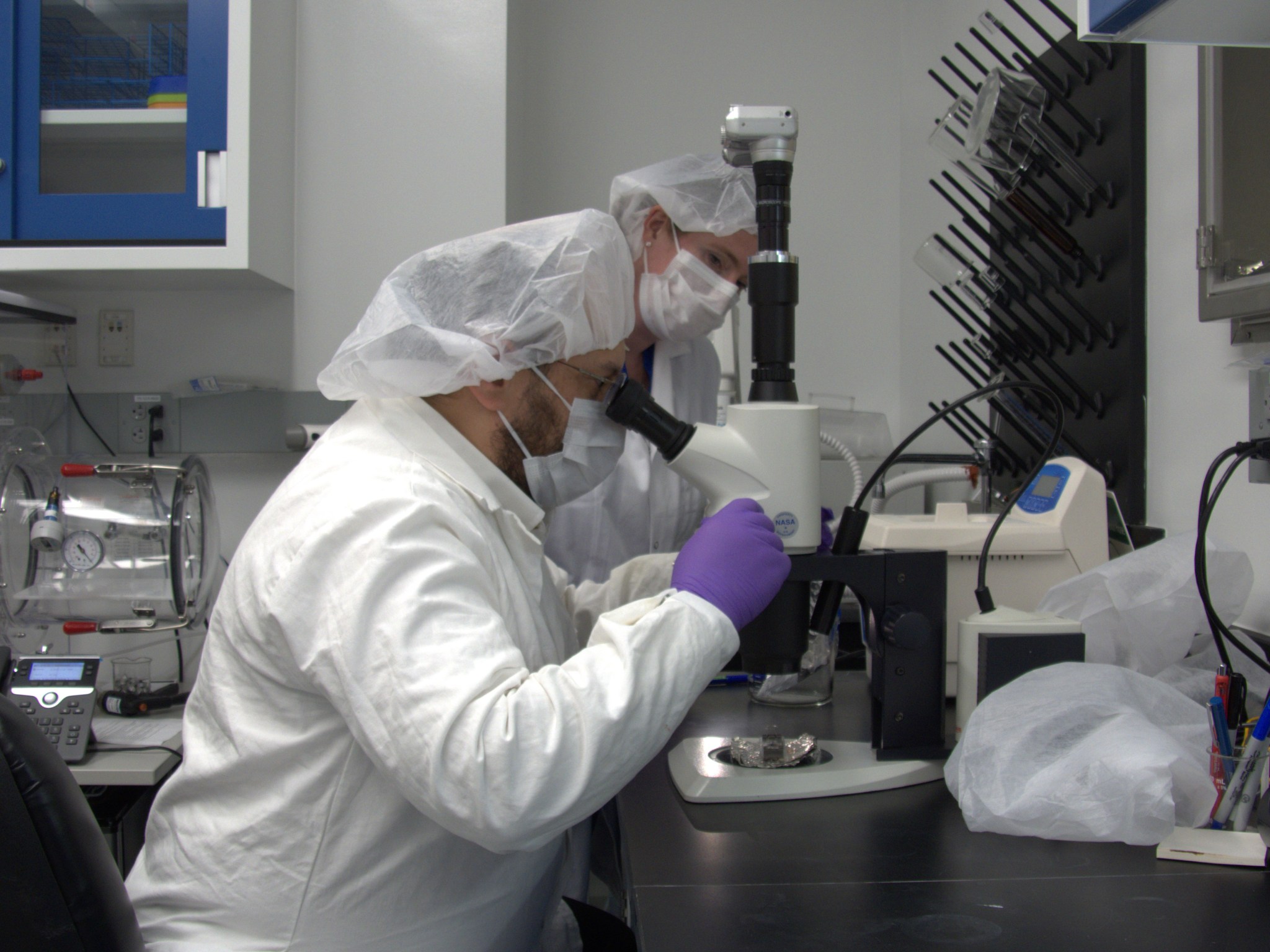
NASA will brief media at 11 a.m. EST Wednesday, Jan. 29, to provide an update on science results from NASA’s OSIRIS-REx (Origins, Spectral Interpretation, Resource Identification, and Security – Regolith Explorer) mission, which delivered a sample of asteroid Bennu to Earth in September 2023.
Audio of the media call will stream live on the agency’s website.
Participants in the teleconference include:
- Nicky Fox, associate administrator, Science Mission Directorate, NASA Headquarters, Washington
- Danny Glavin, senior scientist for sample return, NASA’s Goddard Space Flight Center Greenbelt, Maryland
- Jason Dworkin, OSIRIS-REx project scientist, NASA Goddard
- Tim McCoy, curator of meteorites, Smithsonian Natural History Museum, Washington
- Sara Russell, cosmic mineralogist, Natural History Museum, London
Media interested in participating by phone must RSVP no later than two hours prior to the start of the call to: molly.l.wasser@nasa.gov. A copy of NASA’s media accreditation policy is online.
After the teleconference, NASA Goddard will host a limited onsite media availability for reporters local to the greater Washington area. The availability will include opportunities to tour the center’s astrobiology lab, which contributed to the study of the Bennu sample. Interested reporters should request participation by Sunday, Jan. 26, to: rob.garner@nasa.gov.
Launched on Sept. 8, 2016, OSIRIS-REx was the first U.S. mission to collect a sample from an asteroid in space. The spacecraft traveled to near-Earth asteroid Bennu and collected a sample of rocks and dust from the surface in 2020. It delivered the sample to Earth on Sept. 24, 2023.
To learn more about OSIRIS-REx, visit:
https://science.nasa.gov/mission/osiris-rex/
-end-
Karen Fox / Molly Wasser
Headquarters, Washington
202-358-1600
karen.c.fox@nasa.gov / molly.l.wasser@nasa.gov
This NASA/ESA Hubble Space Telescope image features a dusty yet sparkling scene from one of the Milky Way’s satellite galaxies, the Large Magellanic Cloud. The Large Magellanic Cloud is a dwarf galaxy situated about 160,000 light-years away in the constellations Dorado and Mensa.
Despite being only 10–20% as massive as the Milky Way galaxy, the Large Magellanic Cloud contains some of the most impressive nearby star-forming regions. The scene pictured here is on the outskirts of the Tarantula Nebula, the largest and most productive star-forming region in the local universe. At its center, the Tarantula Nebula hosts the most massive stars known, weighing roughly 200 times the mass of the Sun.
The section of the nebula shown here features serene blue gas, brownish-orange dust patches, and a sprinkling of multicolored stars. The stars within and behind the dust clouds appear redder than those that are unobscured by dust. Dust absorbs and scatters blue light more than red light, allowing more of the red light to reach our telescopes, which makes the stars appear redder than they are. This image incorporates ultraviolet and infrared light as well as visible light. Using Hubble observations of dusty nebulae in the Large Magellanic Cloud and other galaxies, researchers can study these distant dust grains, helping them better understand the role that cosmic dust plays in the formation of new stars and planets.
]]>NASA Space Tech’s Favorite Place to Travel in 2025: The Moon!
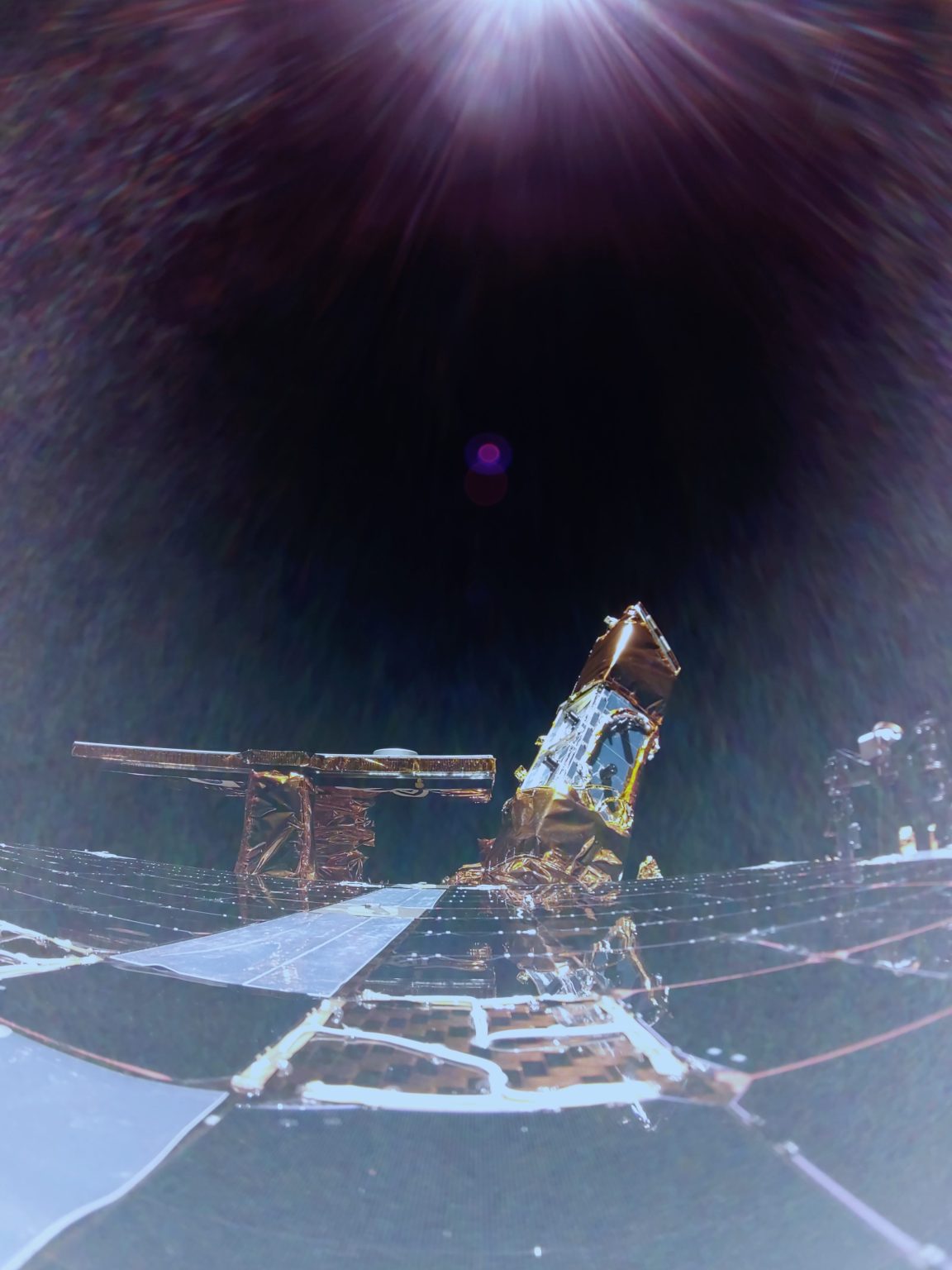
NASA Space Technology has big travel plans for 2025, starting with a trip to the near side of the Moon!
Among ten groundbreaking NASA science and technology demonstrations, two technologies are on a ride to survey lunar regolith – also known as “Moon dust” – to better understand surface interactions with incoming lander spacecraft and payloads conducting experiments on the surface. These dust demonstrations and the data they’re designed to collect will help support future lunar missions.
Blue Ghost Mission 1 launched at 1:11 a.m. EST aboard a SpaceX Falcon 9 rocket from Launch Complex 39A at the agency’s Kennedy Space Center in Florida. The company is targeting a lunar landing on Sunday, March 2.
NASA Space Technology on Blue Ghost Mission 1
NASA’s Electrodynamic Dust Shield (EDS) will lift, transport, and remove particles using electric fields to repel and prevent hazardous lunar dust accumulation on surfaces. The agency’s Stereo Camera for Lunar Plume-Surface Studies (SCALPSS) technology will use stereo imaging to capture the impact of rocket plumes on lunar regolith as the lander descends to the Moon’s surface, returning high-resolution images that will help in creating models to predict regolith erosion – an important task as bigger, heavier payloads are delivered to the Moon in close proximity to each other.
The EDS and SCALPSS technologies will be delivered to the Moon on Firefly’s first Blue Ghost mission, named Ghost Riders in the Sky, as part of NASA’s CLPS (Commercial Lunar Payload Services) initiative. Its landing target is a 300-mile-wide basin located on the Moon’s near side, called Mare Crisium – a large, dark, basaltic plain that filled an ancient asteroid impact. First-of-their-kind experiments will deploy after landing to gather important data in a broad spectrum of areas including geophysical characteristics, global navigation, radiation tolerant computing, and the behavior of lunar regolith.
Replicating the Moon’s harsh environment on Earth is a significant challenge because of extreme temperatures, low gravity, radiation, and dusty surface. The CLPS initiative provides unprecedented access to the lunar surface, allowing us to demonstrate technologies in the exact conditions they were designed for. Missions like Blue Ghost Mission 1 are a true game changer for NASA technology advancement and demonstration.”

Michael Johansen
Flight Demonstrations Lead for NASA’s Game Changing Development program
Understanding regolith
The Moon’s dusty environment was one of the greatest challenges astronauts faced during Apollo Moon missions, posing hazards to lunar surface systems, space suits, habitats, and instrumentation. What was learned from those early missions – and from thousands of experiments conducted on Earth and in space since – is that successful surface missions require the ability to eliminate dust from all kinds of systems. Lunar landings, for example, cause lunar dust to disperse in all directions and collect on everything that lands there with it. This is one of the reasons such technologies are important to understand. The SCALPSS technology will study the dispersion of lunar dust, while EDS will demonstrate a solution to mitigate it.
Getting this new data on lunar regolith with be pivotal for our understanding of the lunar surface. We’ve long known that lunar dust is a huge challenge. The Lunar Surface Innovation Initiative has enabled us to initiate lunar dust mitigation efforts across the agency, working with industry and international partners. The lunar science, exploration, and technology communities are eager to have new quantitative data, and to prove laboratory experiments and develop technology solutions.”
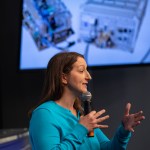
Kristen John
Technical Integration Lead for NASA’s Lunar Surface Innovation Initiative (LSII)
Dust mitigation technology has come a long way, but we still have a lot to learn to develop surface systems and infrastructure for more complex missions. LSII is actively engaged in this effort, working with the lunar community across sectors to expand knowledge and design new approaches for future technologies. Working alongside the Lunar Surface Innovation Consortium, LSII has a unique opportunity to take a holistic look at dust’s role in the development of surface infrastructure with other key capability areas including in-situ resource utilization, surface power, and surviving the lunar night.
Learning from the the Moon benefits Mars science and exploration
Capabilities for minimizing dust interaction are as important for future missions on Mars as it is for missions on the Moon. Like the Moon, Mars is also covered with regolith, also called Martian dust or Martian soil, but the properties are different than lunar regolith, both in shape and mineralogy. The challenges Mars rovers have encountered with Martian regolith have provided great insight into the challenges we will face during lunar surface missions. Learning is interwoven and beneficial to future missions whether hundreds of thousands of miles from Earth, on the Moon, or millions, on Mars.
Learn more from a planetary scientist about how science factors into lunar dust mitigation technologies:
]]>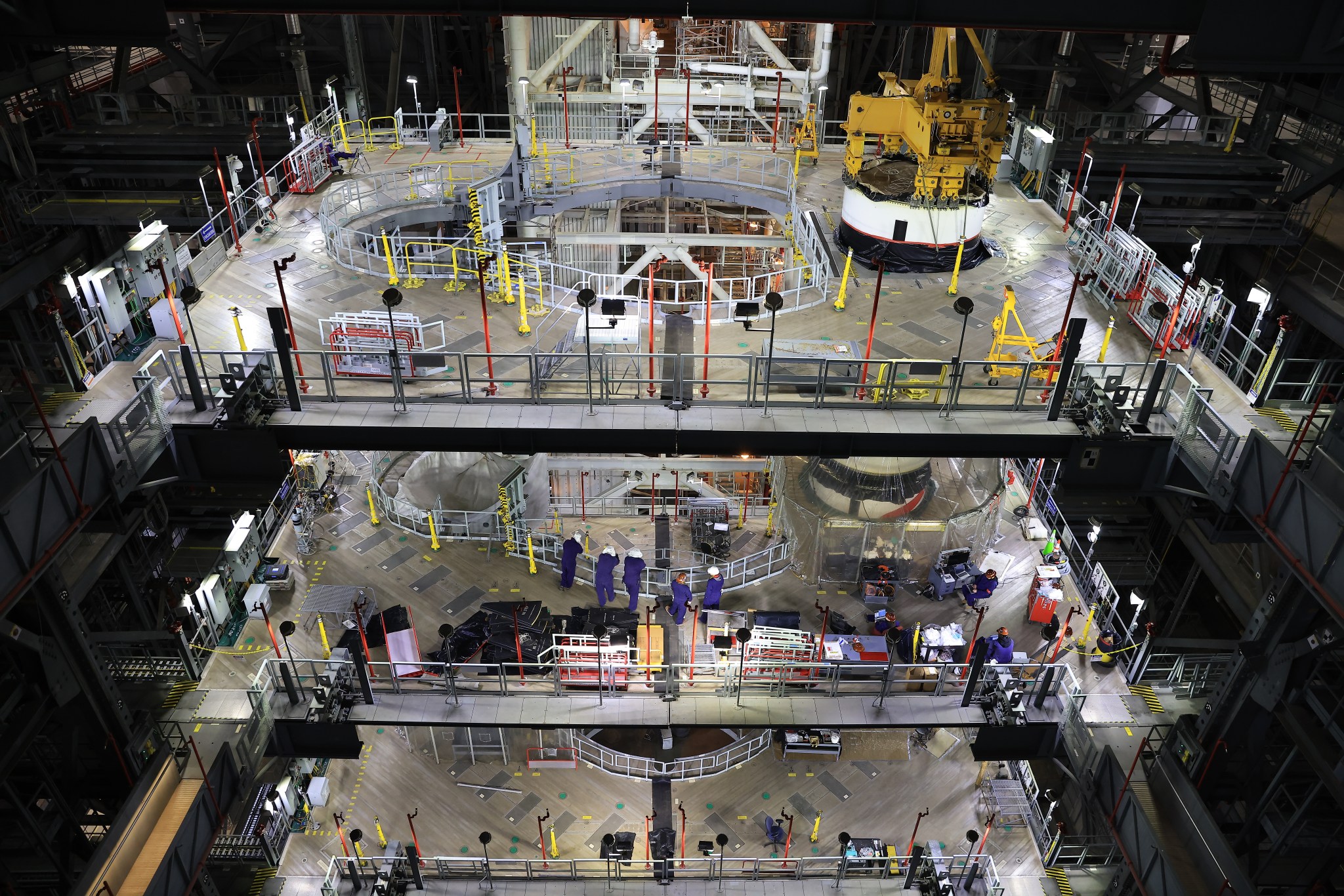
Teams with NASA’s Exploration Ground Systems Program continue stacking the SLS (Space Launch System) rocket’s twin solid rocket booster motor segments for the agency’s Artemis II mission, inside the Vehicle Assembly Building (VAB) at NASA’s Kennedy Space Center in Florida.
Currently, six of the 10 segments are secured atop mobile launcher 1 with the right forward center segment as the latest addition. Teams will continue integrating the booster stack – the left center center segment adorned with the NASA “worm” insignia is the next segment to be integrated.
The right and left forward assemblies were brought to the VAB from the spaceport’s Booster Fabrication Facility on Jan. 14. The forward assemblies are comprised of three parts: the nose cone which serves as the aerodynamic fairing; a forward skirt, which house avionics; and the frustum which houses motors that separates the boosters from the SLS core stage during flight. The remaining booster segments will be transported from the Rotation, Processing, and Surge Facility to the VAB when engineers are ready to integrate them. The forward assemblies will be the last segments integrated to complete the booster configuration, ahead of integration with the core stage.
Image Credit: NASA/Kim Shiflett
]]>NASA’s NICER Continues Science Operations Post Repair
NASA crew aboard the International Space Station installed patches to the agency’s NICER (Neutron star Interior Composition Explorer) mission during a spacewalk on Jan. 16. NICER, an X-ray telescope perched near the station’s starboard solar array, resumed science operations later the same day.
The patches cover areas of NICER’s thermal shields where damage was discovered in May 2023. These thin filters block sunlight while allowing X-rays to pass through. After the discovery, the NICER team restricted their observations during the station’s daytime to avoid overwhelming the mission’s sensitive detectors. Nighttime observations were unaffected, and the team was able to continue collecting data for the science community to make groundbreaking measurements using the instrument’s full capabilities.
The repair went according to plan. Data since collected shows the detectors behind the patched areas are performing better than before during station night, and the overall level of sunlight inside NICER during the daytime is reduced substantially.
While NICER experiences less interference from sunlight than before, after analyzing initial data, the team has determined the telescope still experiences more interference than expected. The installed patches cover areas of known damage identified using astronomical observations and from photos taken by both external robotic cameras and astronauts inside the space station. Measurements collected since the repair and close-up, high-resolution photos obtained during the spacewalk are providing new information that may point the way toward further daytime data collection.
In the meantime, NICER continues operations with its full measurement capabilities during orbit night to enable further trailblazing discoveries in time domain and multimessenger astrophysics.
Media contact: Alise Fisher, NASA Headquarters / Claire Andreoli, NASA Goddard
June 8, 2023
Sunlight ‘Leak’ Impacting NASA’s NICER Telescope, Science Continues
On Tuesday, May 22, NASA’s NICER (Neutron Star Interior Composition Explorer), an X-ray telescope on the International Space Station, developed a “light leak,” in which unwanted sunlight enters the instrument. While analyzing incoming data since then, the team identified an impact to daytime observations. Nighttime observations seem to be unaffected.
The team suspects that at least one of the thin thermal shields on NICER’s 56 X-ray Concentrators has been damaged, allowing sunlight to reach its sensitive detectors.
To mitigate the effects on measurements, the NICER team has limited daytime observations to objects far away from the Sun’s position in the sky. The team has also updated commands to NICER that automatically lower its sensitivity during the orbital day to reduce the effects from sunlight contamination. The team is evaluating these changes and assessing additional measures to reduce the impact on science observations.
To date, more than 300 scientific papers have used NICER observations, and the team is confident that NICER will continue to produce world-class science.
Media contact: Alise Fisher, NASA Headquarters / Claire Andreoli, NASA Goddard
Share
Details
Related Terms
In October 1982, NASA assigned astronauts Mattingly, Shriver, Onizuka, and Buchli as the STS-10 crew for a dedicated DOD flight aboard Challenger then scheduled for September 1983. Payton joined the crew as a payload specialist in the summer of 1983 with Keith Wright assigned as his backup. The failure of the IUS on STS-6 in April 1983 delayed the STS-10 mission, that also used the IUS, until engineers could identify and fix the cause of the problem. By September 1983, NASA had remanifested the crew and the payload on STS-41F with a July 1984 launch, that changed to STS-41E by November 1983. Additional delays in fixing the IUS delayed the mission yet again, by June 1984 redesignated as STS-51C and slated for December 1984 aboard Challenger.
STS-51C marked the third spaceflight for Mattingly, selected in 1966 as part of NASA’s fifth group of astronauts. He served on the prime crew for Apollo 13 until exposure to German measles forced his last-minute replacement by his backup. He then flew on Apollo 16 and STS-4. For Shriver, Onizuka, and Buchli, all three selected as astronauts in the class of 1978, STS-51C marked their first trip into space. The U.S. Air Force selected Payton and Wright in August 1979 in its first class of Manned Spaceflight Engineers, and STS-51C marked Payton’s first and only space mission.
In November 1984, NASA decided to delay STS-51C from December 1984 to January 1985 and swap orbiters from Challenger to Discovery. Postflight inspections following Challenger’s STS-41G mission in October 1984 revealed degradation of the bonding materials holding thermal protection system tiles onto the orbiter, requiring the replacement of 4,000 tiles. The time required to complete the work precluded a December launch. Tests conducted on Discovery prior to its November STS-51A mission revealed the bonding material to be sound.
On Jan. 5, 1985, Discovery rolled out from KSC’s Vehicle Assembly Building, where workers mated it with its External Tank (ET) and SRBs, to Launch Pad 39A. There, engineers conducted the Terminal Countdown Demonstration Test, essentially a dress rehearsal for the actual countdown, on Jan. 6-7, with the crew participating in the final few hours much as they would on launch day. The astronauts returned to KSC on Jan. 20 to prepare for the planned launch on Jan. 23. The day before, NASA managers decided to delay the launch by one day due to unseasonably cold weather, with concern about sub-freezing temperatures causing ice to form on the ET and possibly coming loose during ascent and damaging the vehicle. The DOD had requested that NASA keep the actual launch time secret until T minus nine minutes, with most of the countdown taking place hidden from public view.
Liftoff of Discovery on its third mission, STS-51C, came at 2:50 p.m. EST on Jan. 24, beginning the 15th space shuttle flight. Eight and a half minutes later, Discovery and its five-man crew had reached orbit. And, at the DOD customer’s request, all public coverage of the mission ended. Although NASA could not reveal the spacecraft’s orbital parameters, trade publications calculated that Discovery first entered an elliptical orbit, circularized over the next few revolutions, prior to Onizuka deploying the IUS and payload combination on the seventh orbit. Neither NASA nor the DOD have released any imagery of the deployment or even of the payload bay, with only a limited number of in-cabin and Earth observation photographs made public.
To maintain the mission’s secrecy, NASA could reveal the touchdown time only 16 hours prior to the event. On Jan. 27, Mattingly and Shriver brought Discovery to a smooth landing at KSC’s Shuttle Landing Facility after a flight of three days one hour 33 minutes, the shortest space shuttle mission except for the first two orbital test flights. The astronauts orbited the Earth 49 times. About an hour after touchdown, the astronaut crew exited Discovery and boarded the Astrovan for the ride back to crew quarters. Neither NASA management nor the astronauts held a post mission press conference. The U.S. Air Force announced only that the “IUS aboard STS-51C was deployed from the shuttle Discovery and successfully met its mission objectives.” Later in the day, ground crews towed Discovery to the Orbiter Processing Facility to begin preparing it for its next planned mission, STS-51D in March.
Postscript
Following the recovery of SRBs after each shuttle mission, engineers conducted detailed inspections before clearing them for reuse. After STS-51C, inspections of the critical O-ring seals that prevented hot gases from escaping from the SRB field joints revealed significant erosion and “blow-by” between the primary and secondary O-rings. Both left and right hand SRBs showed this erosion, the most significant of the program up to that time. Importantly, these O-rings experienced weather colder than any previous shuttle mission, with overnight ambient temperatures in the teens and twenties. Even at launch time, the O-rings had reached only 60 degrees. Engineers believed that these cold temperatures made the O-rings brittle and more susceptible to erosion. One year later, space shuttle Challenger launched after similarly cold overnight temperatures, with O-rings at 57 degrees at launch time. The Rogers Commission report laid the blame of the STS-51L accident on the failure of O-rings that allowed super-hot gases to escape from the SRB and impinge on the hydrogen tank in the ET, resulting in the explosion that destroyed the orbiter and claimed the lives of seven astronauts. The commission also faulted NASA’s safety culture for not adequately addressing the issue of O-ring erosion, a phenomenon first observed on STS-2 and to varying degrees on several subsequent missions.
]]>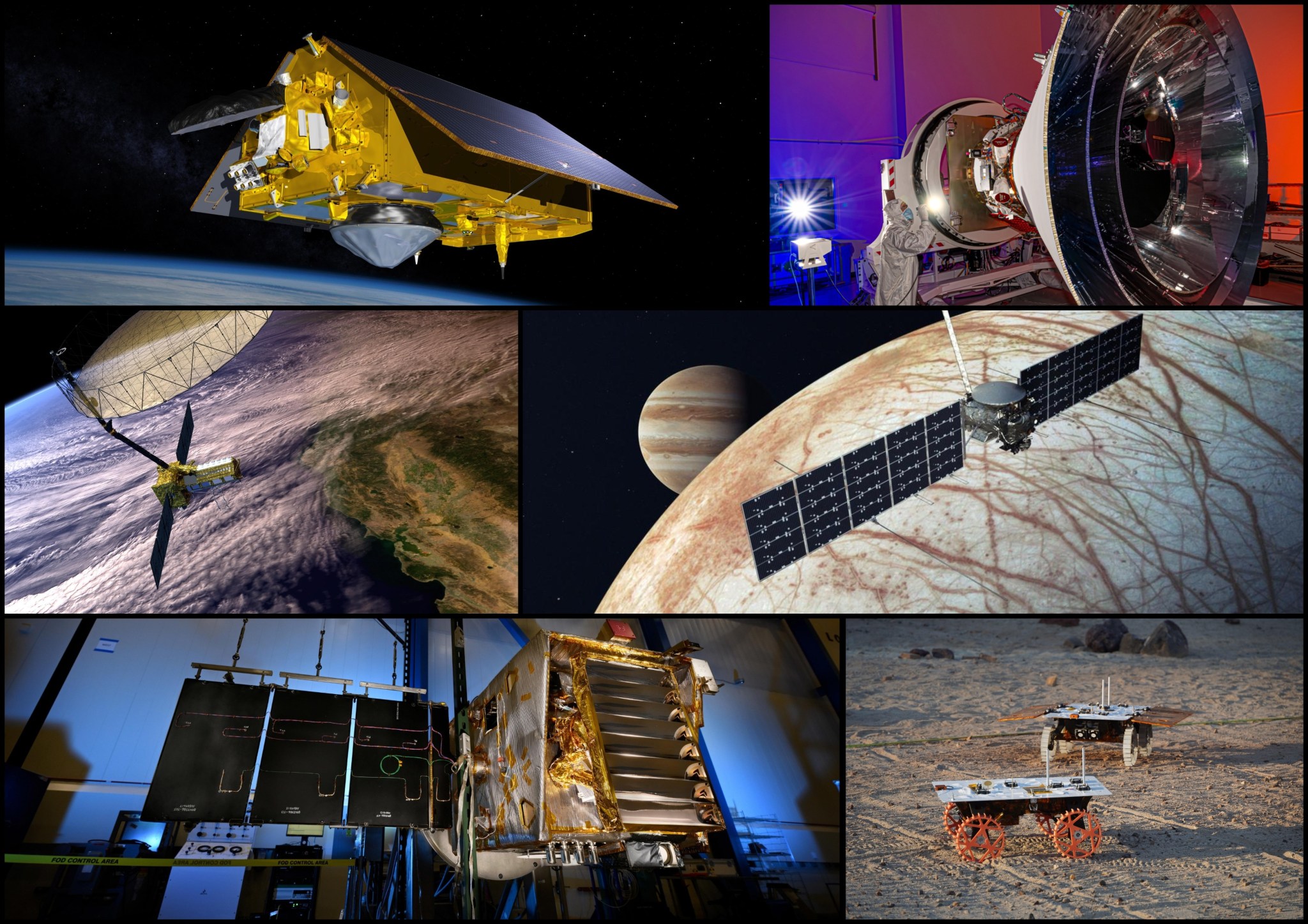
Missions will study everything from water on the Moon to the transformation of our universe after the big bang and ongoing changes to Earth’s surface.
With 2024 receding into the distance, NASA’s Jet Propulsion Laboratory is already deep into a busy 2025. Early in the new year, the Eaton Fire came close to JPL, destroying the homes of more than 200 employees, but work has continued apace to maintain mission operations and keep upcoming missions on track.
Several missions managed by NASA JPL are prepping for launch this year. Most have been years in the making and launches are, of course, only part of the bigger picture. Other milestones are also on the docket for the federal laboratory, which Caltech manages for NASA.
Here’s a glimpse of what lies ahead this year.
Mysterious Universe
Shaped like the bell of a trumpet and as big as a subcompact car, NASA’s SPHEREx space observatory is aiming for the stars. Known formally as the Spectro-Photometer for the History of the Universe, Epoch of Reionization and Ices Explorer, the mission will create four 3D maps of the entire sky in order to improve humanity’s understanding of the universe — how it expanded after the big bang, where ingredients of life can be found in ice grains, and much more. Target launch date: no earlier than Feb. 27 from Vandenberg Space Force Base in California.
The Moon’s Icy Secrets
NASA’s Lunar Trailblazer aims to help resolve an enduring mystery: Where is the Moon’s water? Scientists have seen signs suggesting it exists even where temperatures soar on the lunar surface, and there’s good reason to believe it can be found as surface ice in permanently shadowed craters, places that have not seen direct sunlight for billions of years. Managed by NASA JPL and led by Caltech, the small satellite will help provide answers, mapping the Moon’s surface water in unprecedented detail to determine the water’s abundance, location, form, and how it changes over time. The small satellite will hitch a ride, slated for late February, on the same launch as the Intuitive Machines-2 delivery to the Moon through NASA’s CLPS (Commercial Lunar Payload Services) initiative.
Earth’s Changing Surface
A collaboration between the United States and India, NISAR is a major addition to the fleet of satellites studying our changing planet. Short for NASA-Indian Space Research Organisation Synthetic Aperture Radar, the mission’s name is a nesting doll of acronyms, and the spacecraft is a nesting doll of capabilities: The first spacecraft to carry both L-band and S-band radars, it will see surface changes related to volcanoes, earthquakes, ice sheet motion, deforestation, and more in unprecedented detail after it launches in a few months’ time.
Sea Level
Targeting a November launch, Sentinel-6B will provide global sea surface height measurements — some of the most accurate data of its kind yet — that will improve climate models and hurricane tracking, as well as our understanding of phenomena like El Niño. A collaboration between NASA and ESA (European Space Agency), the spacecraft will take the baton from its twin, Sentinel-6 Michael Freilich, which launched in 2020. Together, the satellites are extending for another 10 years a nearly three-decade record of global sea surface height.
Moon Rover Trio
As a technology demonstration, the CADRE (Cooperative Autonomous Distributed Robotic Exploration) project marks another step NASA is taking toward developing robots that, by operating autonomously, can boost the efficiency of future missions. The project team at JPL will soon be packing up and shipping CADRE’s three suitcase-size rovers to Texas in preparation for their journey to the Moon aboard a commercial lander through one of NASA’s future CLPS deliveries. The rovers are designed to work together as a team without direct input from mission controllers back on Earth. And, by taking simultaneous measurements from multiple locations, they are meant to show how multirobot missions could enable new science and support astronauts.
Quantum Technology
Having arrived at the International Space Station in November, SEAQUE (Space Entanglement and Annealing QUantum Experiment) is testing two technologies that, if successful, could enable communication using entangled photons between two quantum systems. The research from this experiment, which gets underway in 2025, could help develop the building blocks for a future global quantum network that would allow equipment such as quantum computers to transfer data securely across large distances.
Gravity Assist to Reach Jupiter
Launched this past October, Europa Clipper will arrive at Jupiter in 2030 to investigate whether an ocean beneath the ice shell of the gas giant’s moon Europa has conditions suitable for life. The spacecraft will travel 1.8 billion miles (2.9 billion kilometers) to reach its destination. Since there are limitations on how much fuel the spacecraft can carry, mission planners are having Europa Clipper fly by Mars on March 1, using the planet’s gravity as a slingshot to add speed to its journey.
For more about NASA missions JPL supports, go to:
https://www.jpl.nasa.gov/missions/
News Media Contact
Matthew Segal
Jet Propulsion Laboratory, Pasadena, Calif.
818-354-8307
matthew.j.segal@jpl.nasa.gov
2025-008
Share
Details
Related Terms
The iconic NASA logotype, commonly known as the worm and designed by Bruce Blackburn and Richard Danne in 1976, made its premiere Tuesday, Jan. 23, 2025 at the Museum of Modern Art (MoMA) in New York as part of the museum’s new exhibition “Pirouette: Turning Points in Design,” which runs through Oct. 18.
MoMA accessioned the logotype for its permanent collection, as well as the original NASA Graphics Standards Manual published in 1976, also gifted by NASA. The exhibit also includes a letterform sketch of the NASA worm gifted by the Bruce Blackburn Estate.
The “Pirouette: Turning Points in Design” exhibition showcases widely recognized design icons and those known to more niche audiences, highlighting pivotal moments in design history.
Credit: NASA/Bert Ulrich
]]>